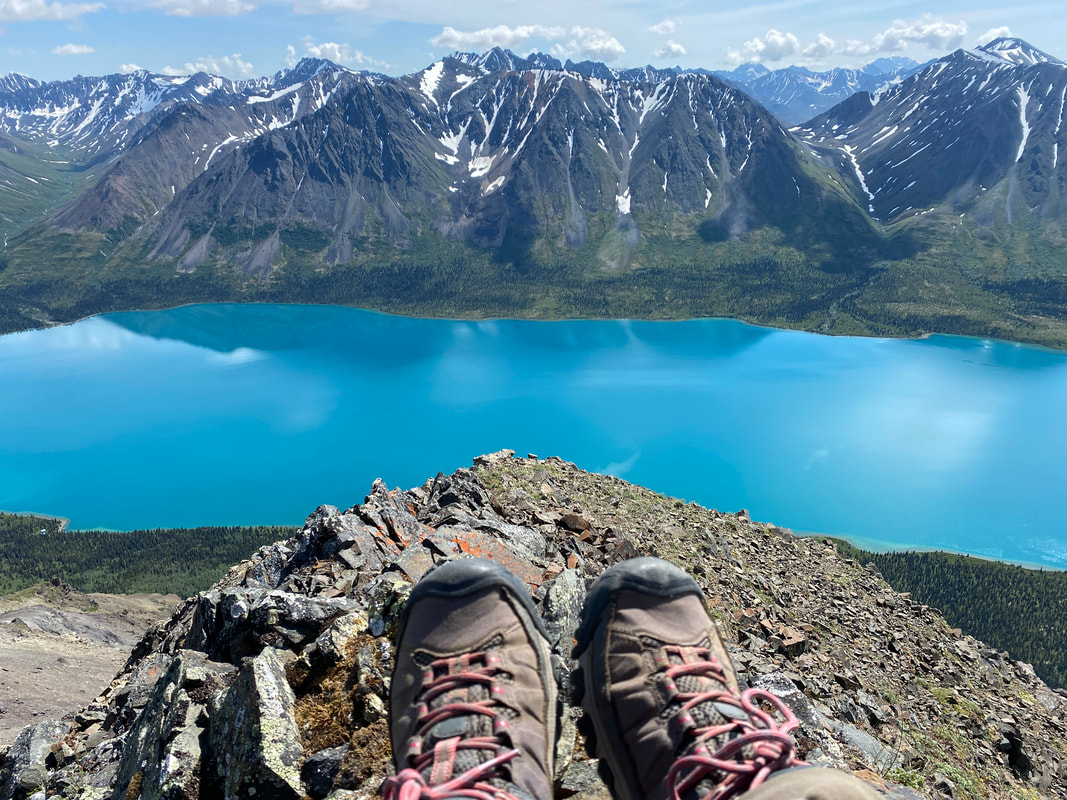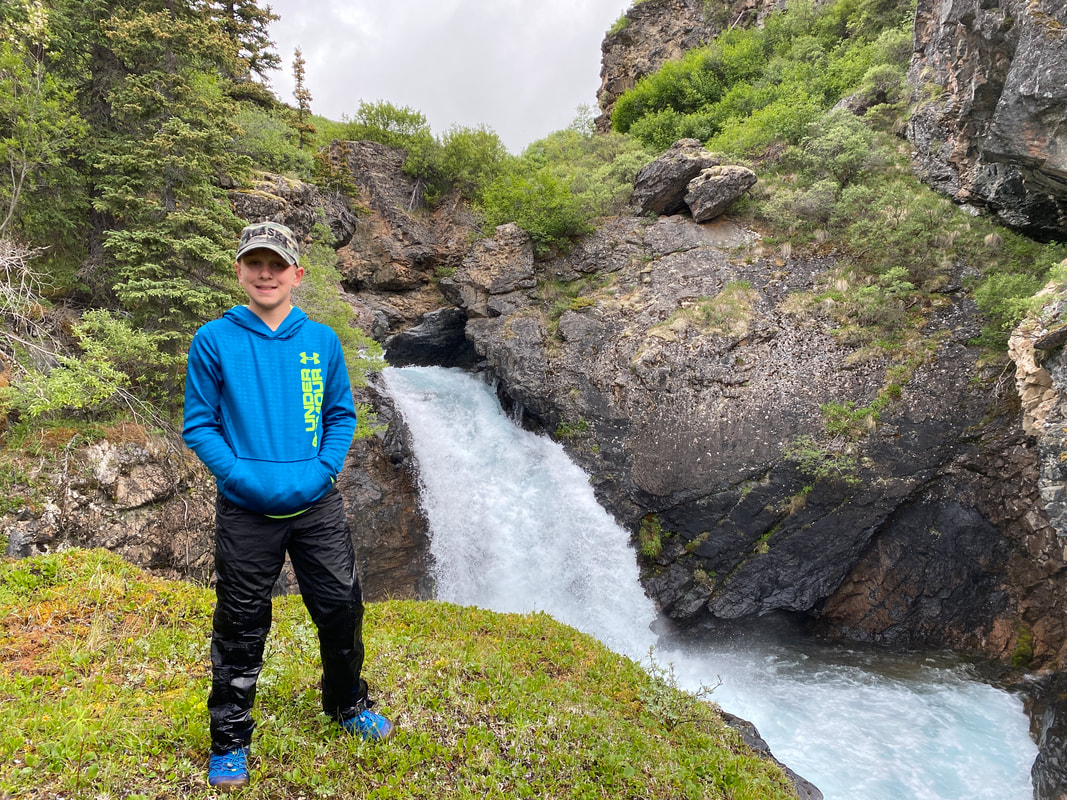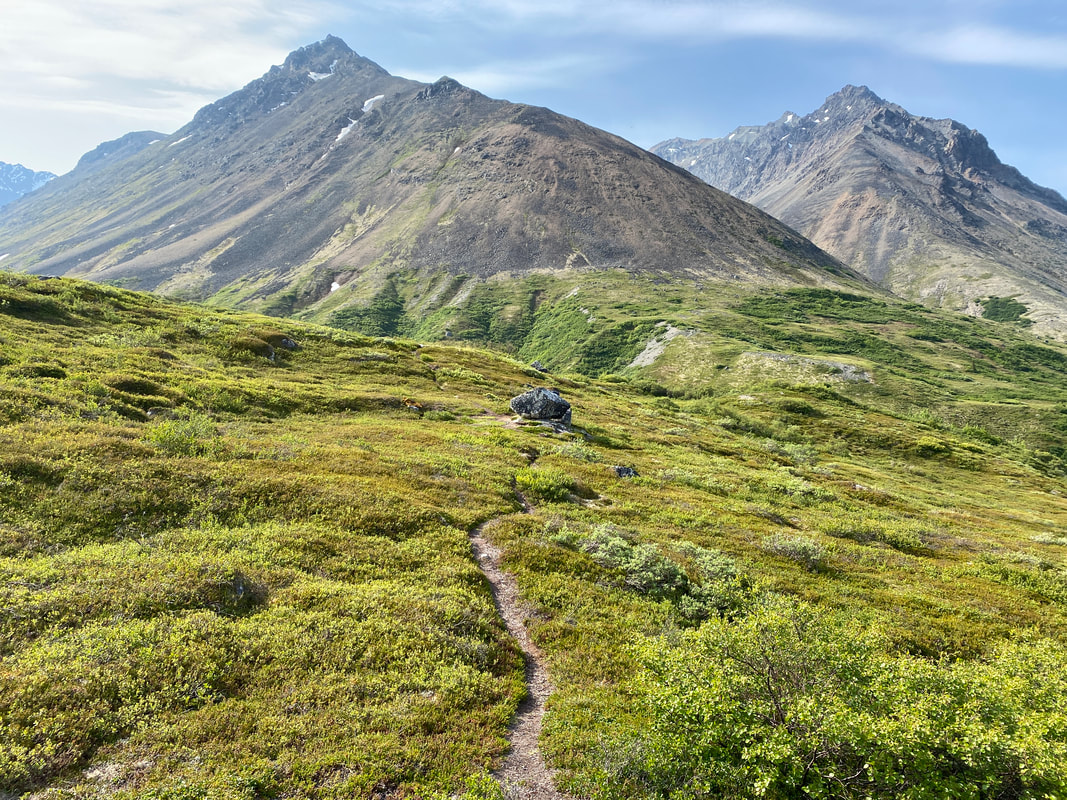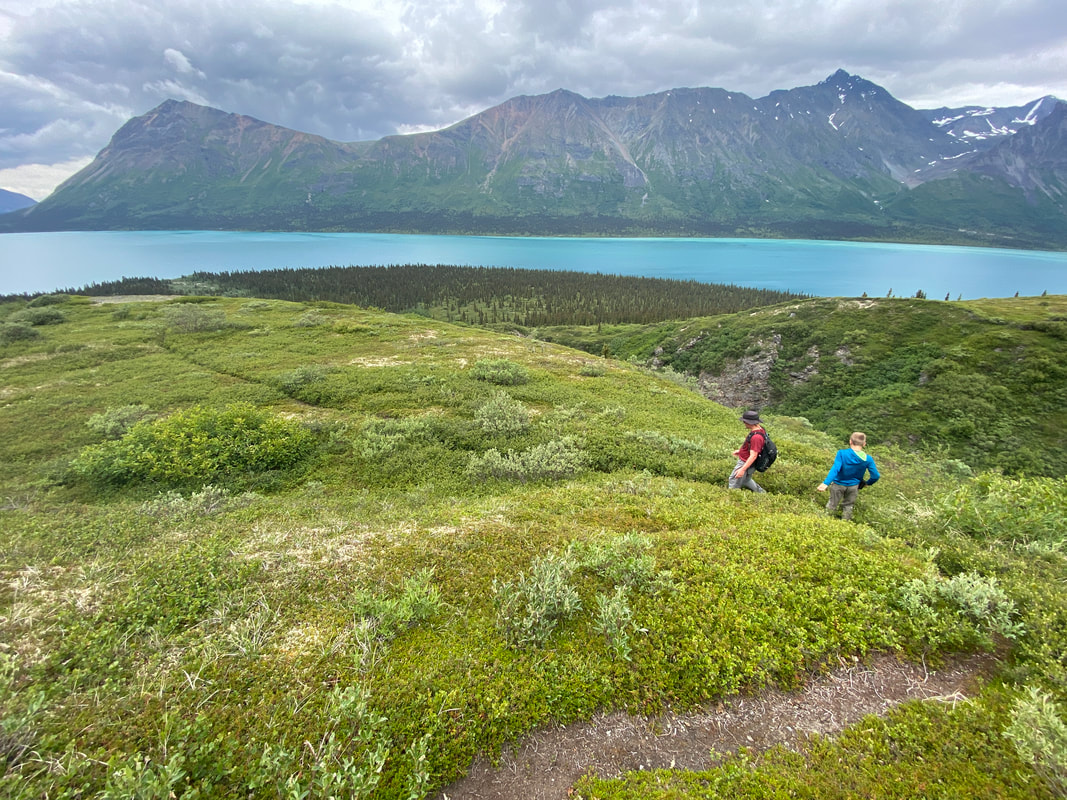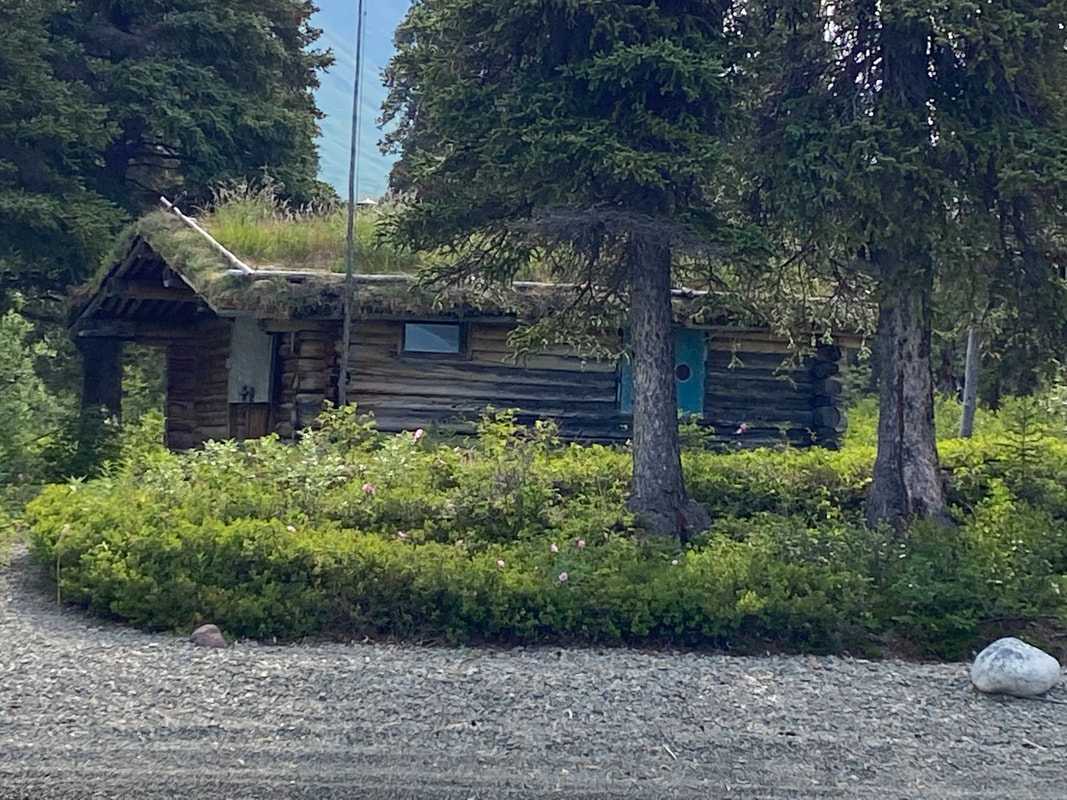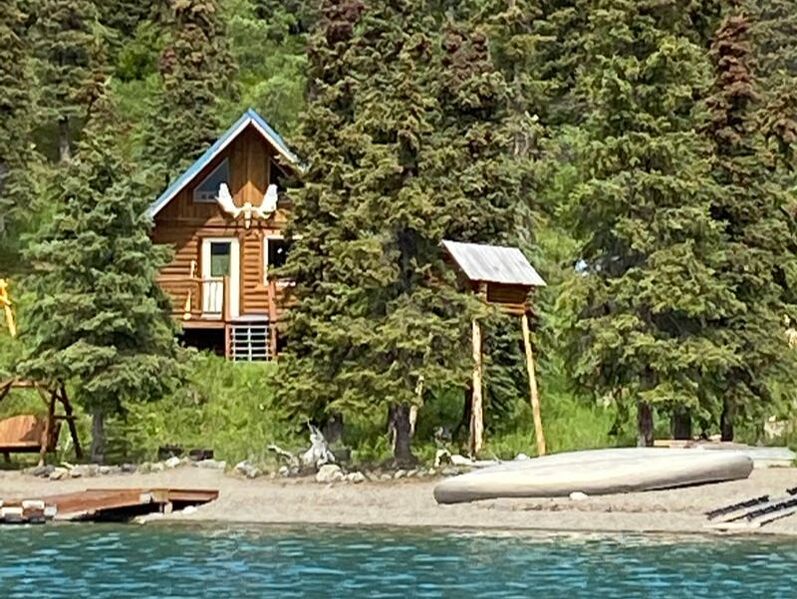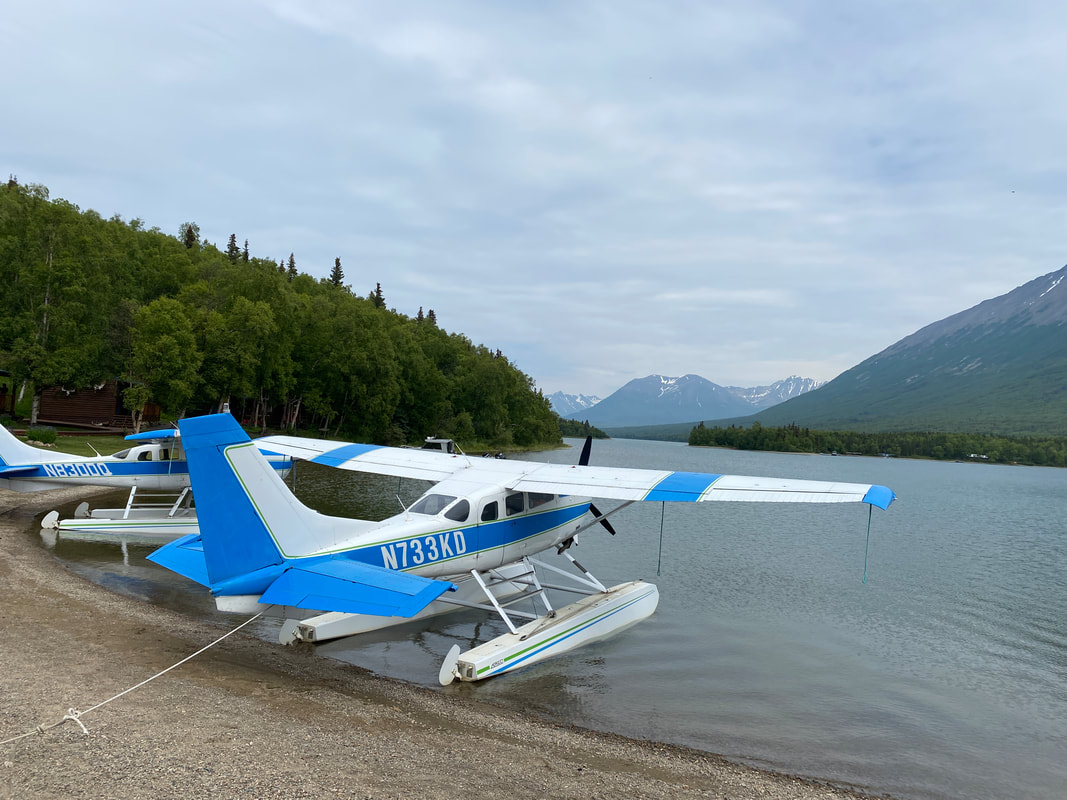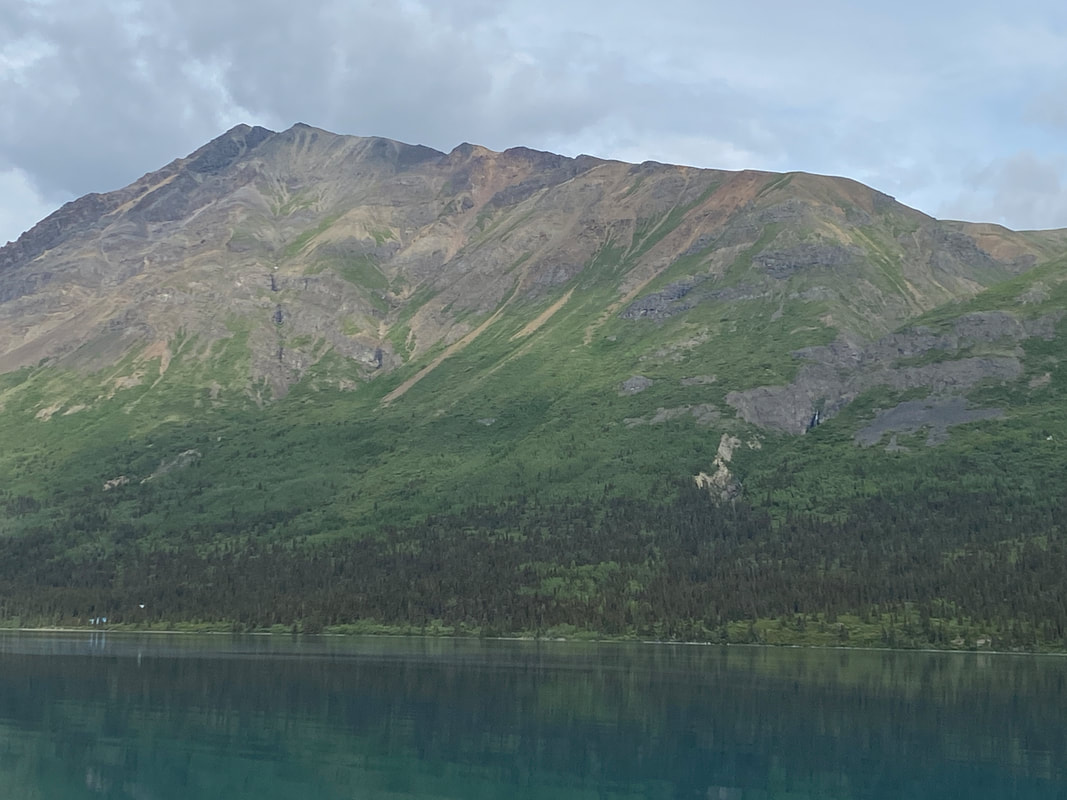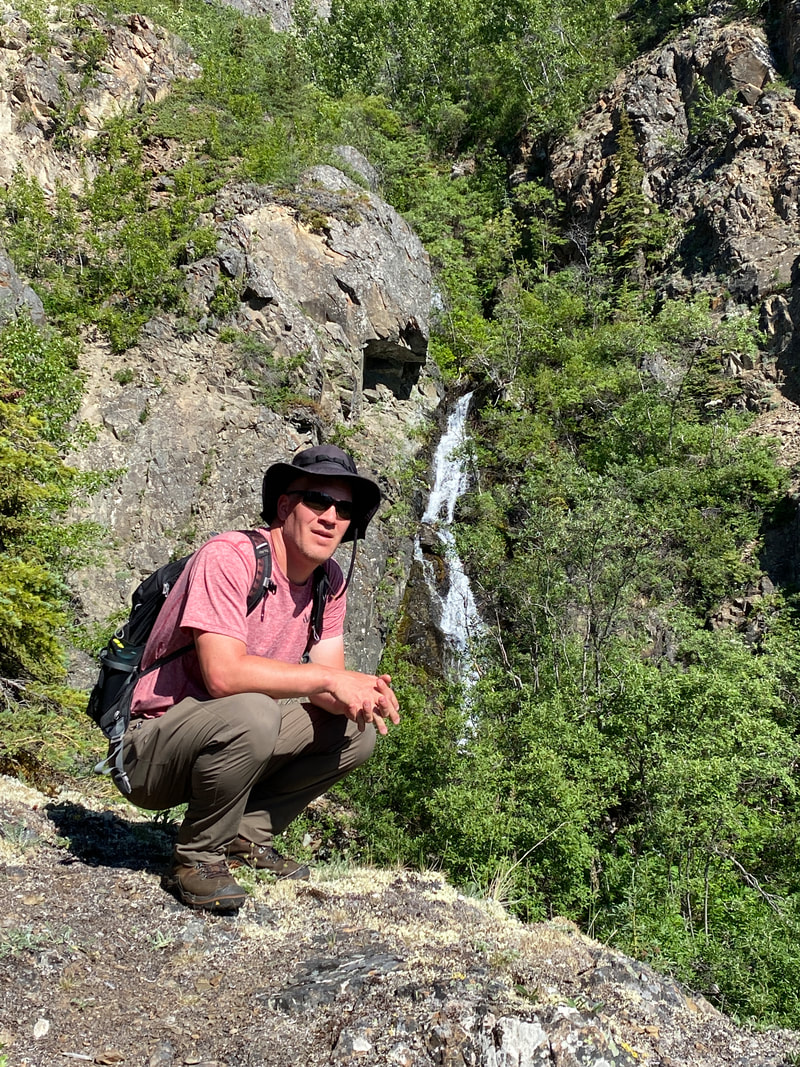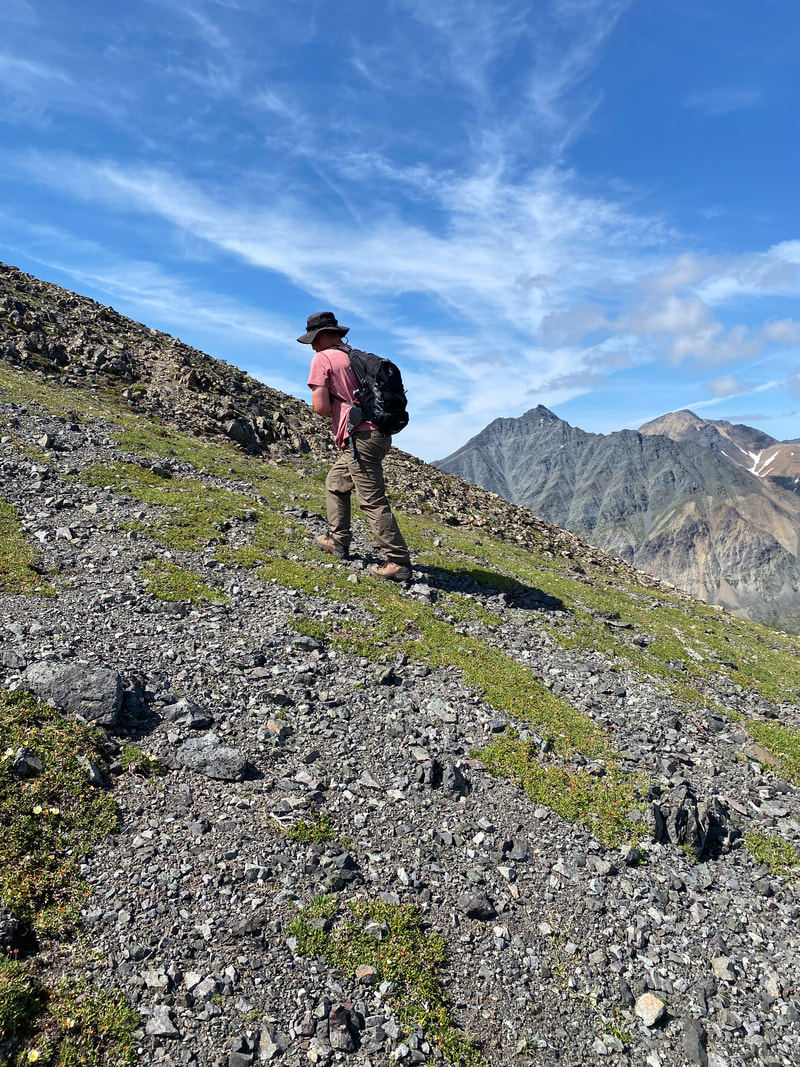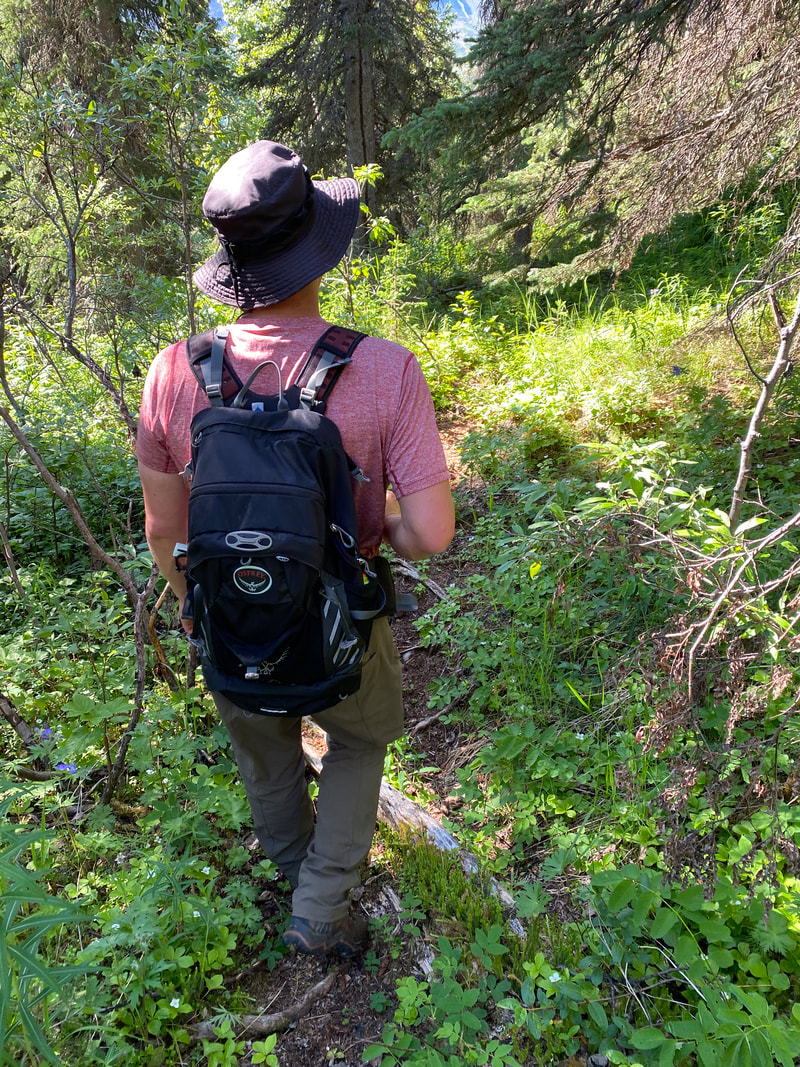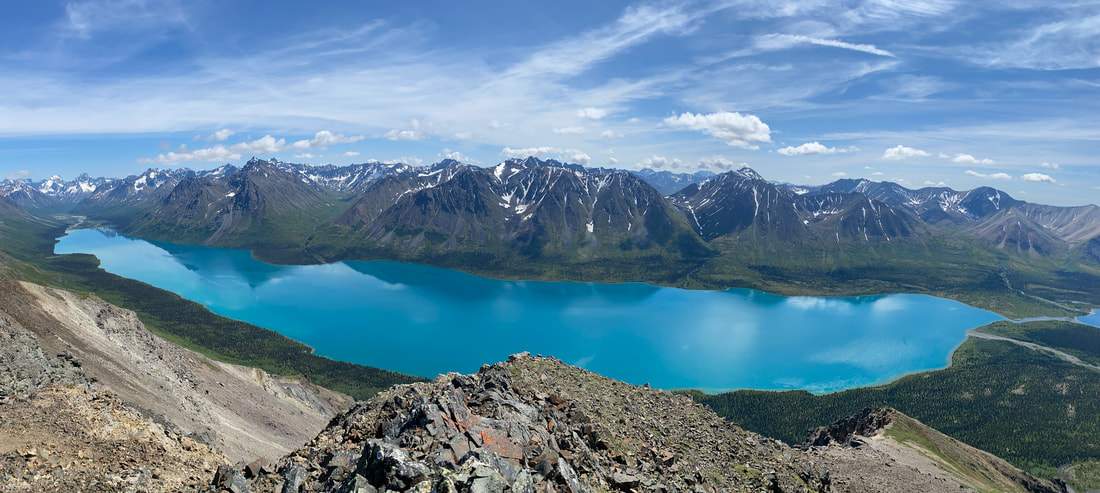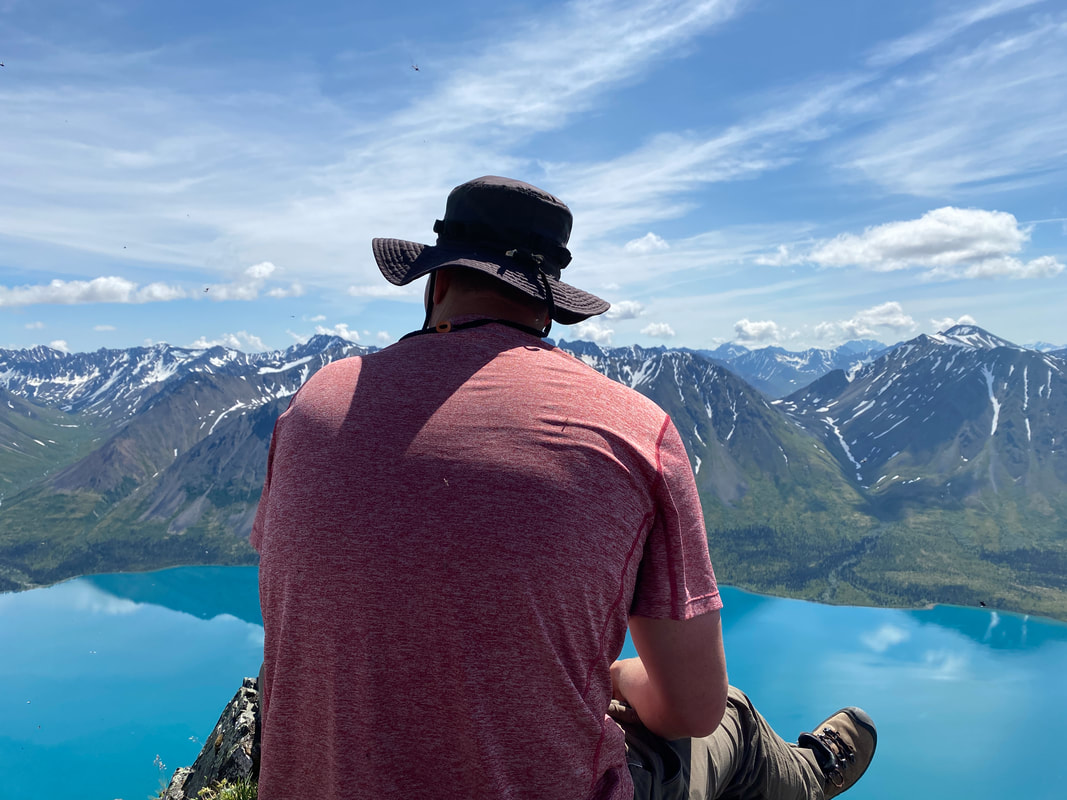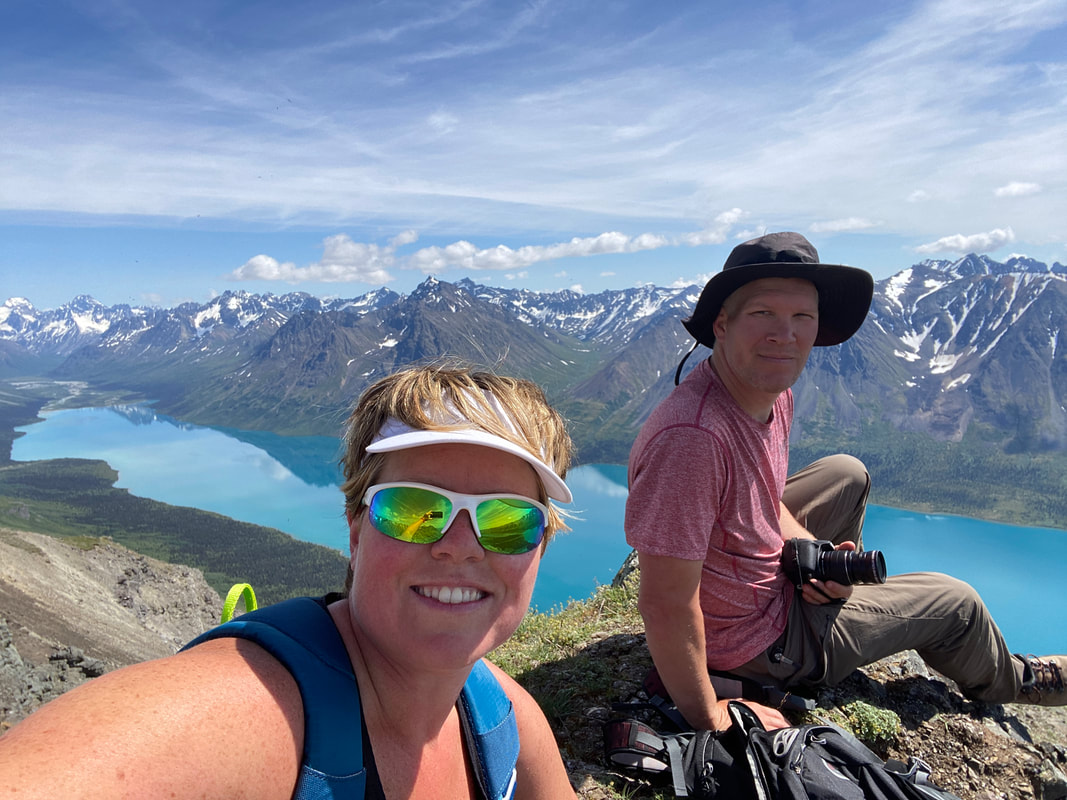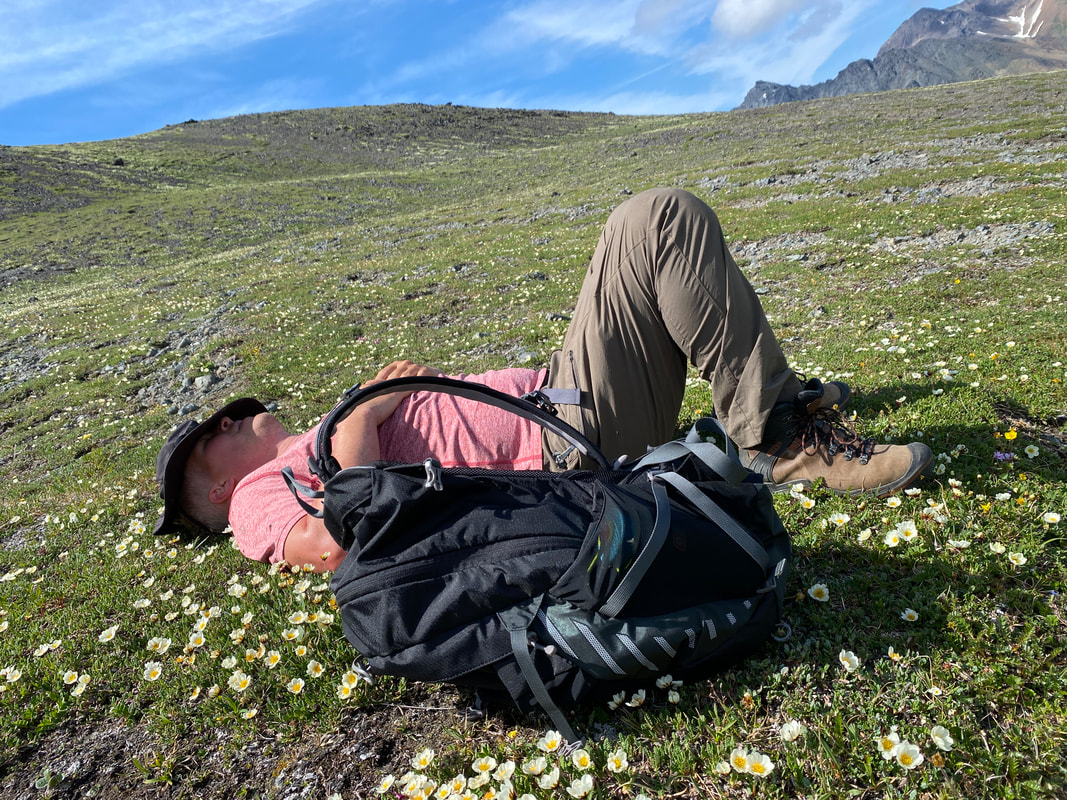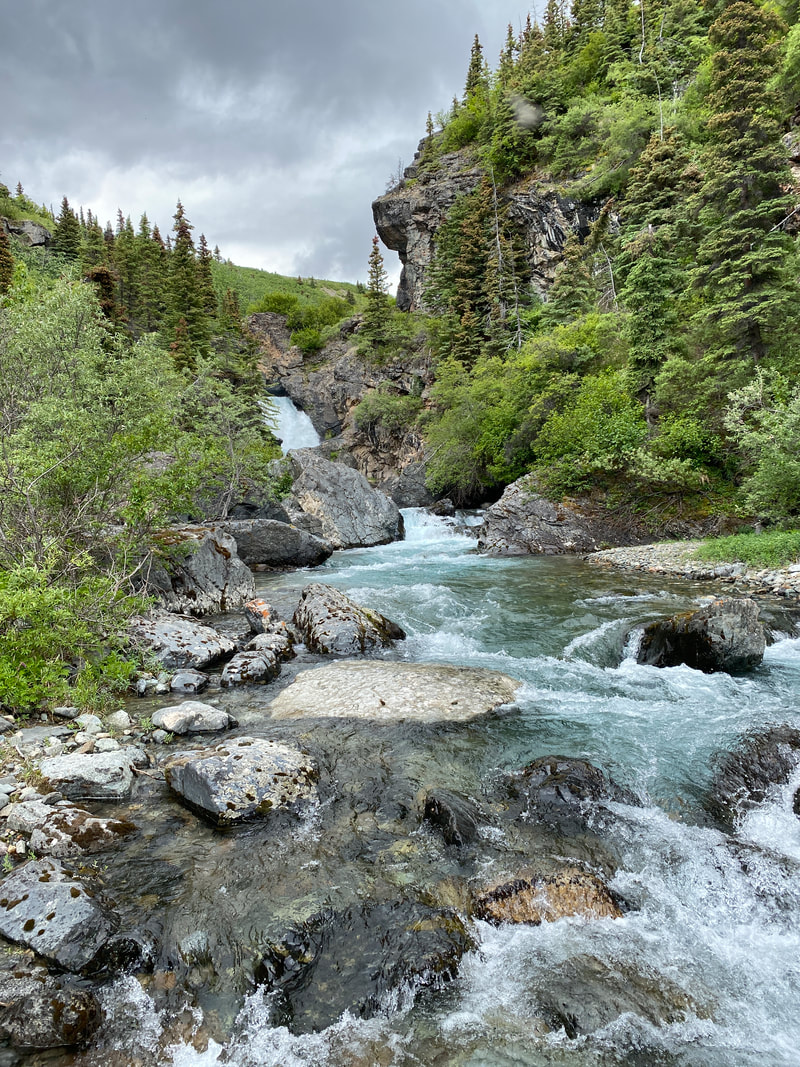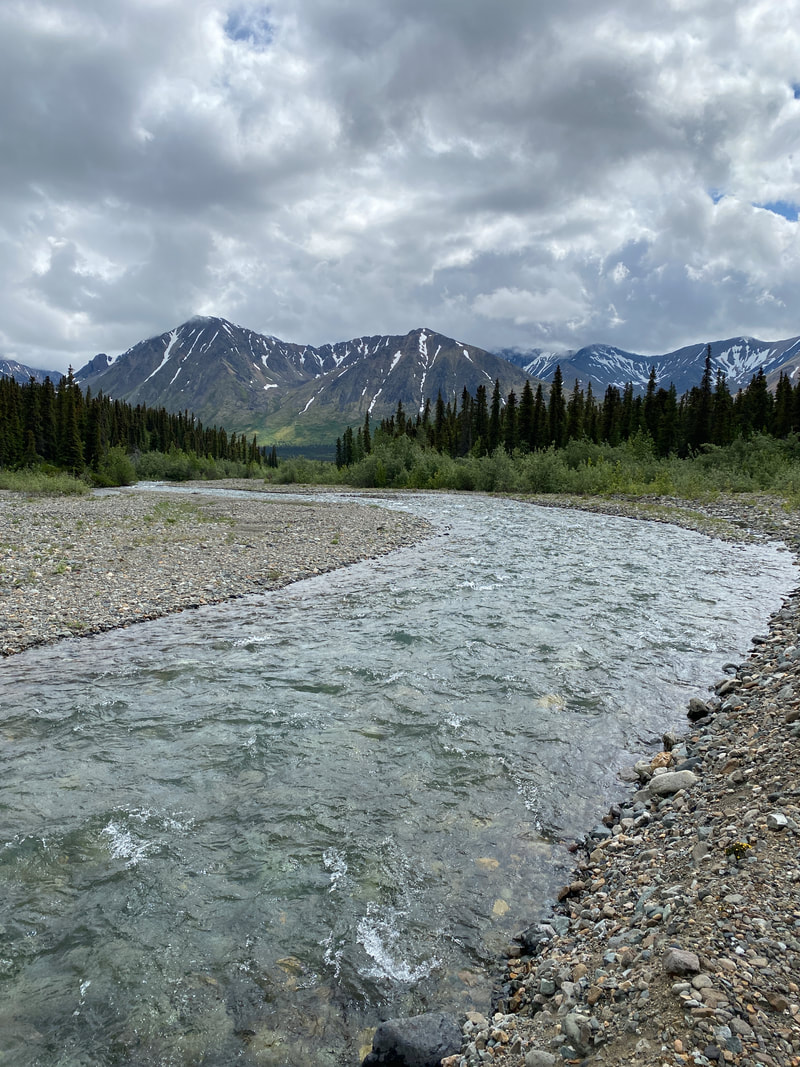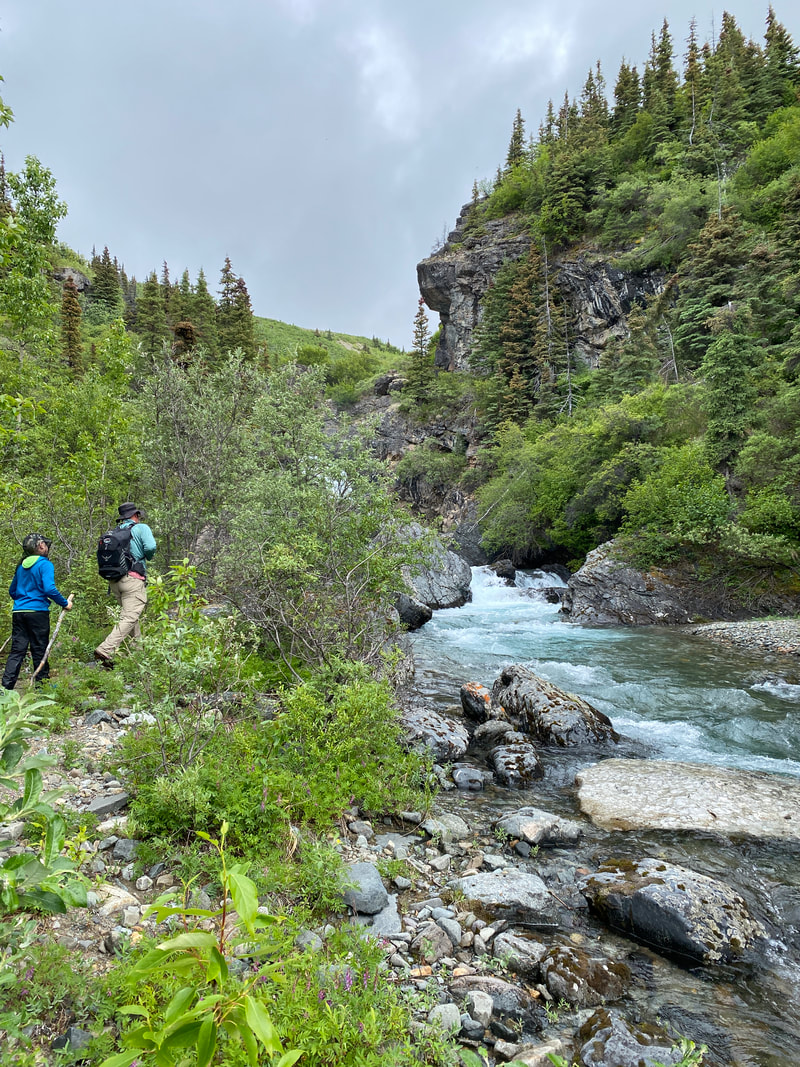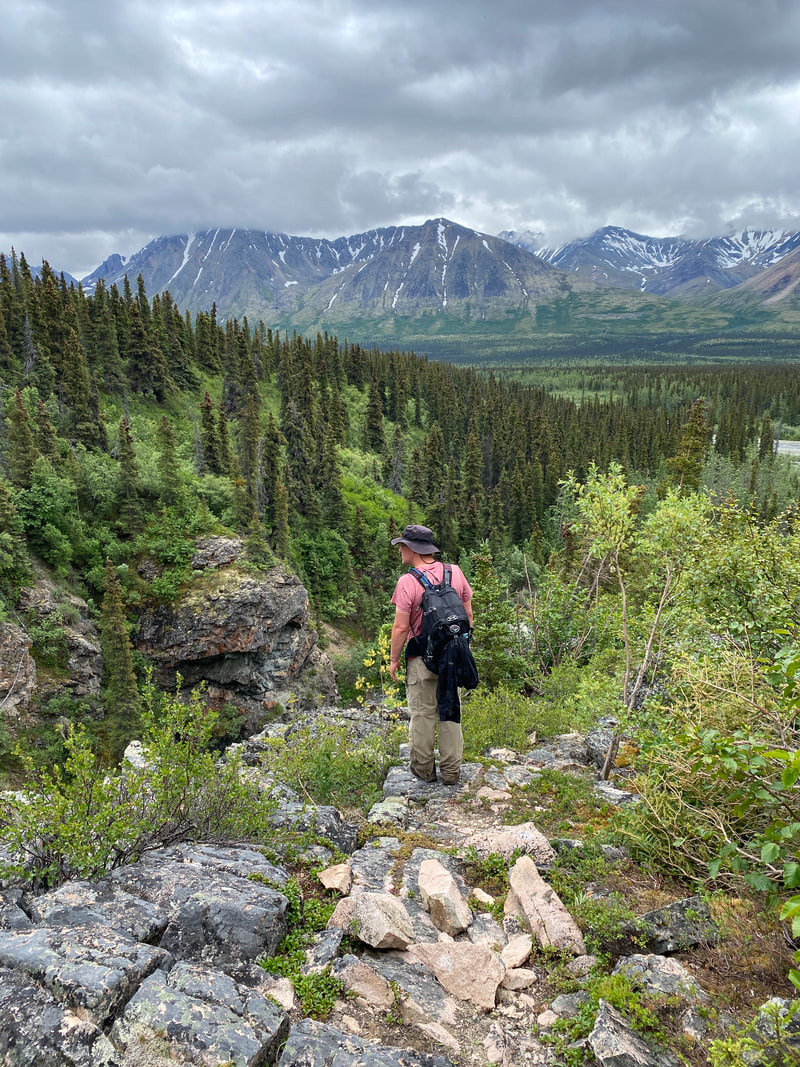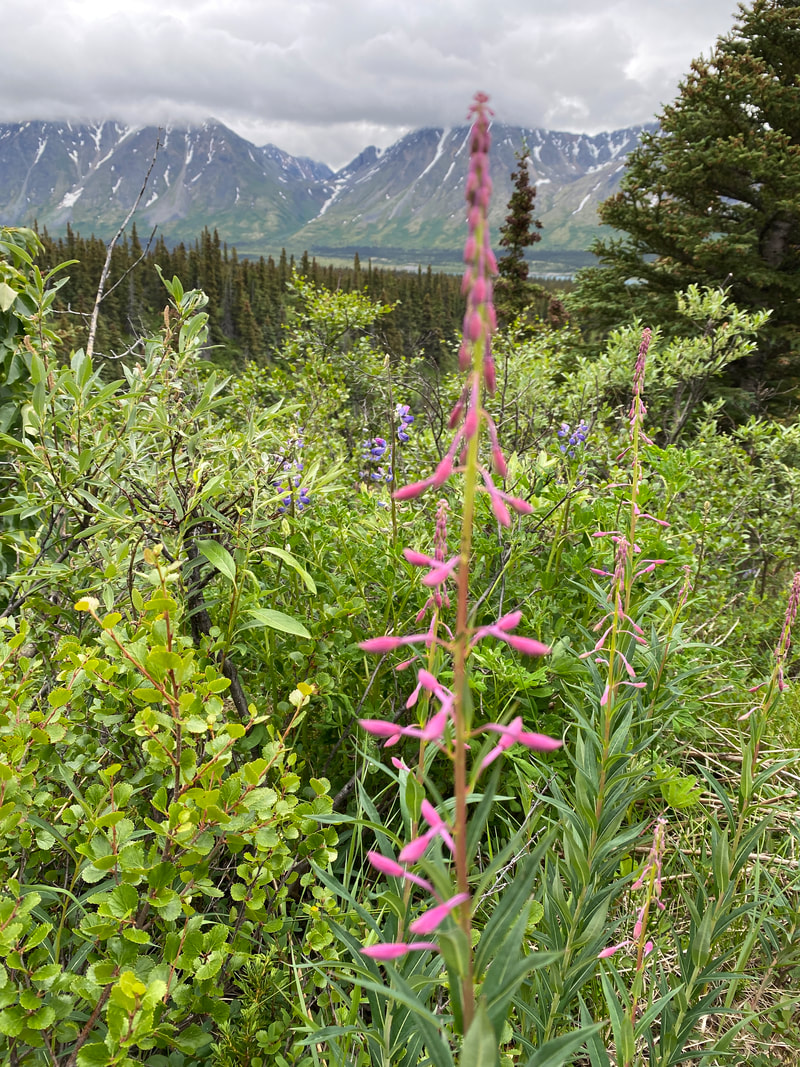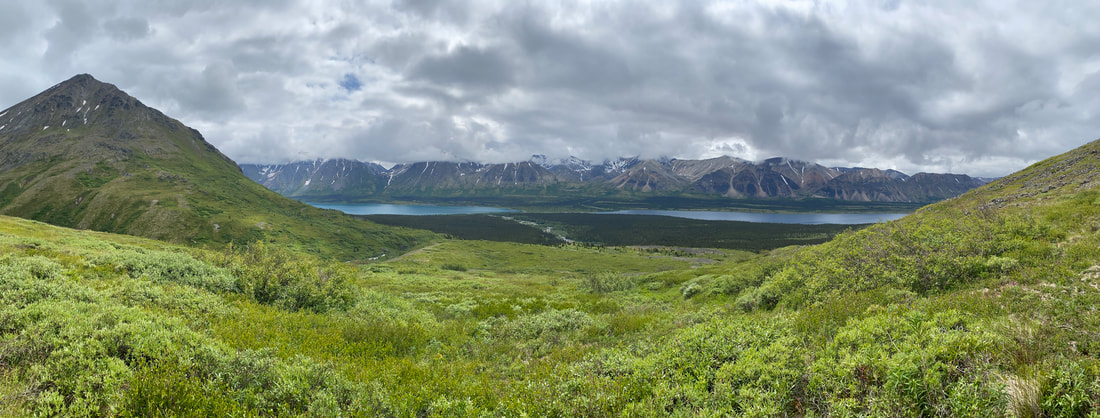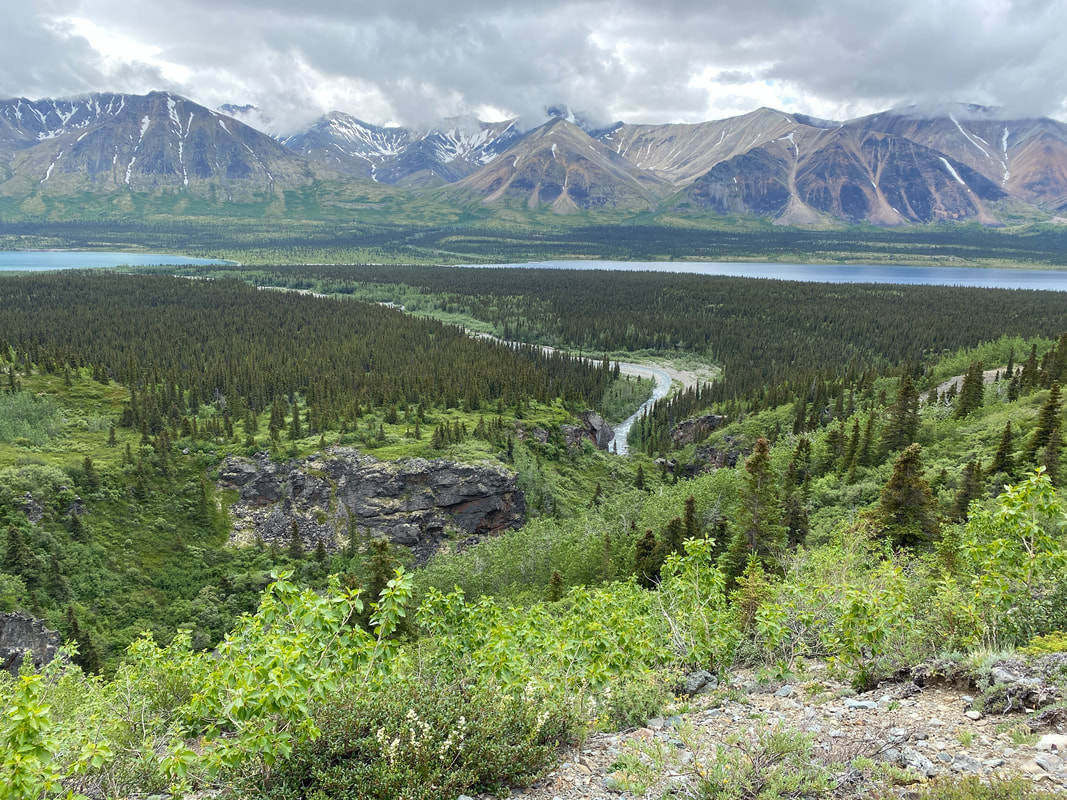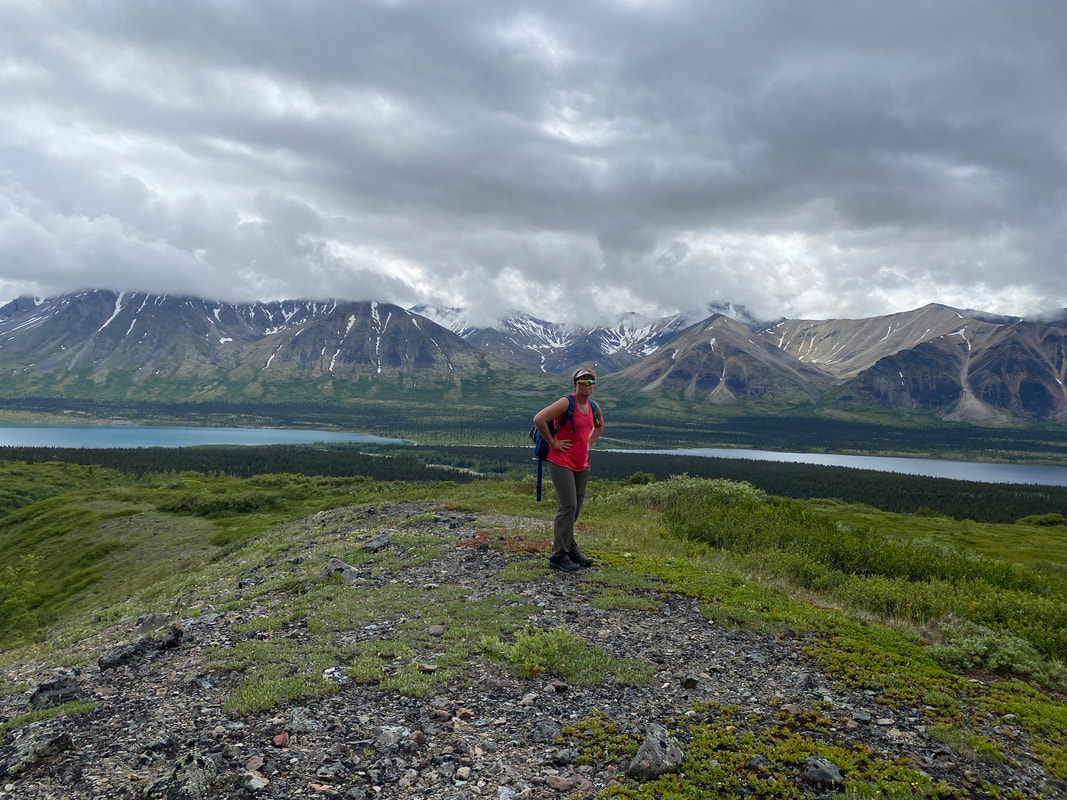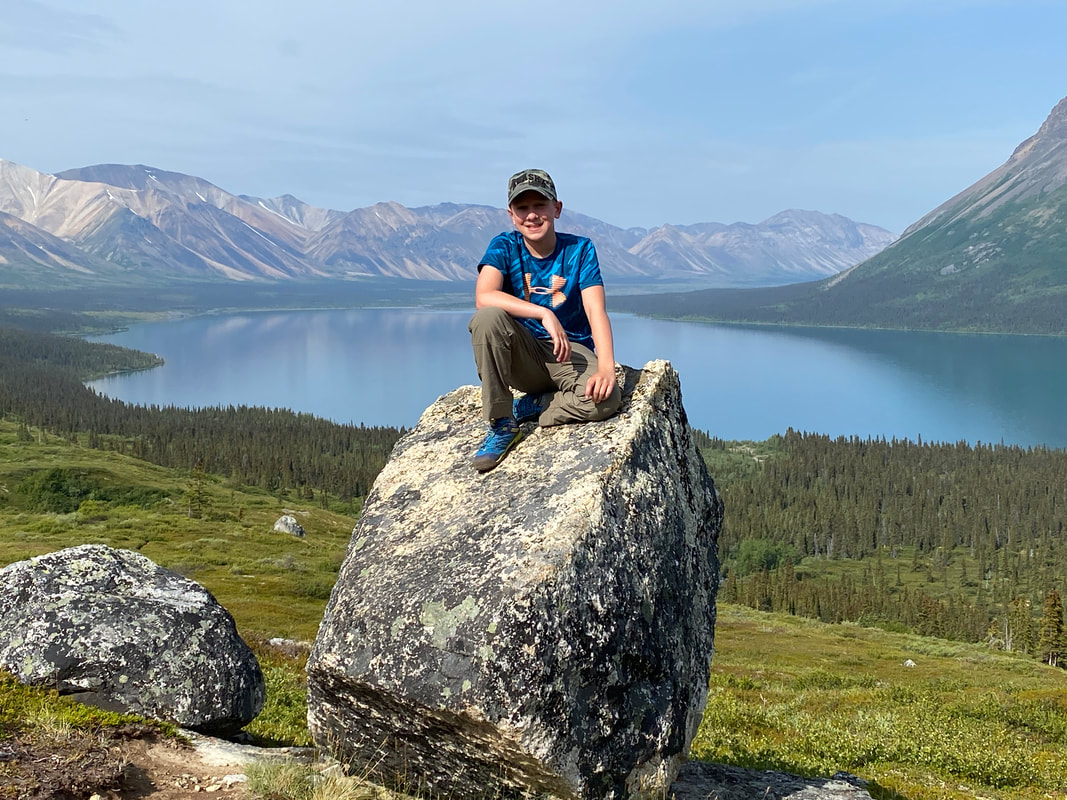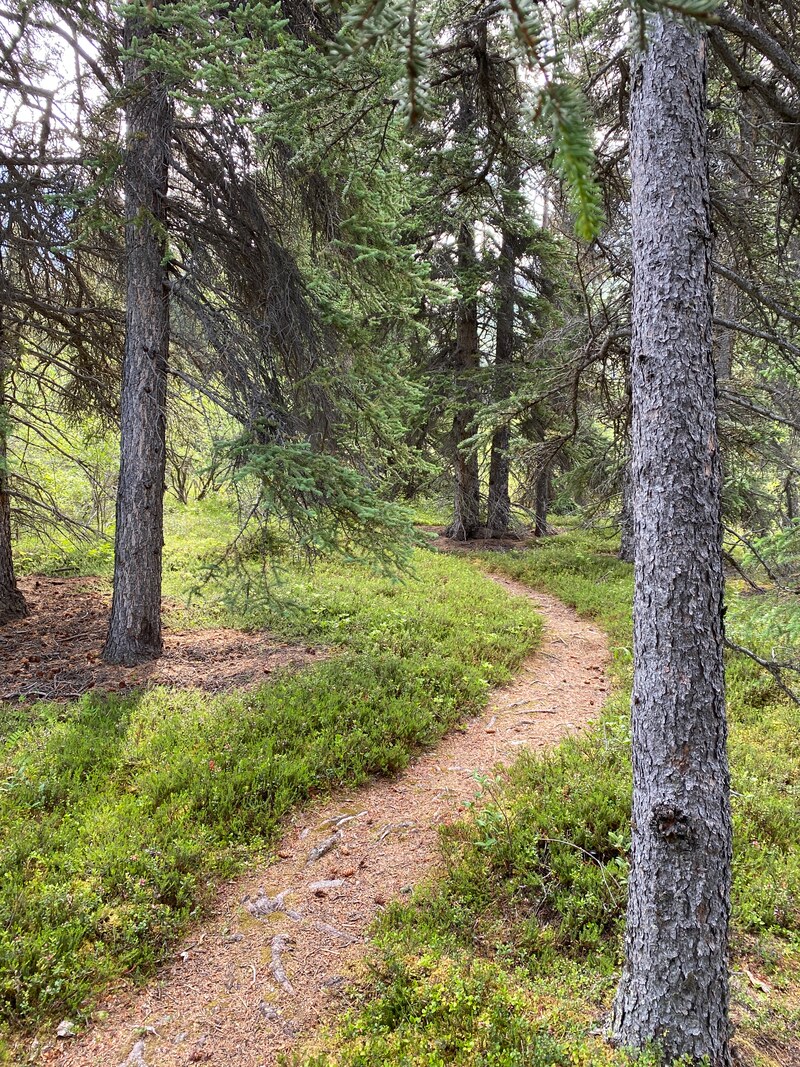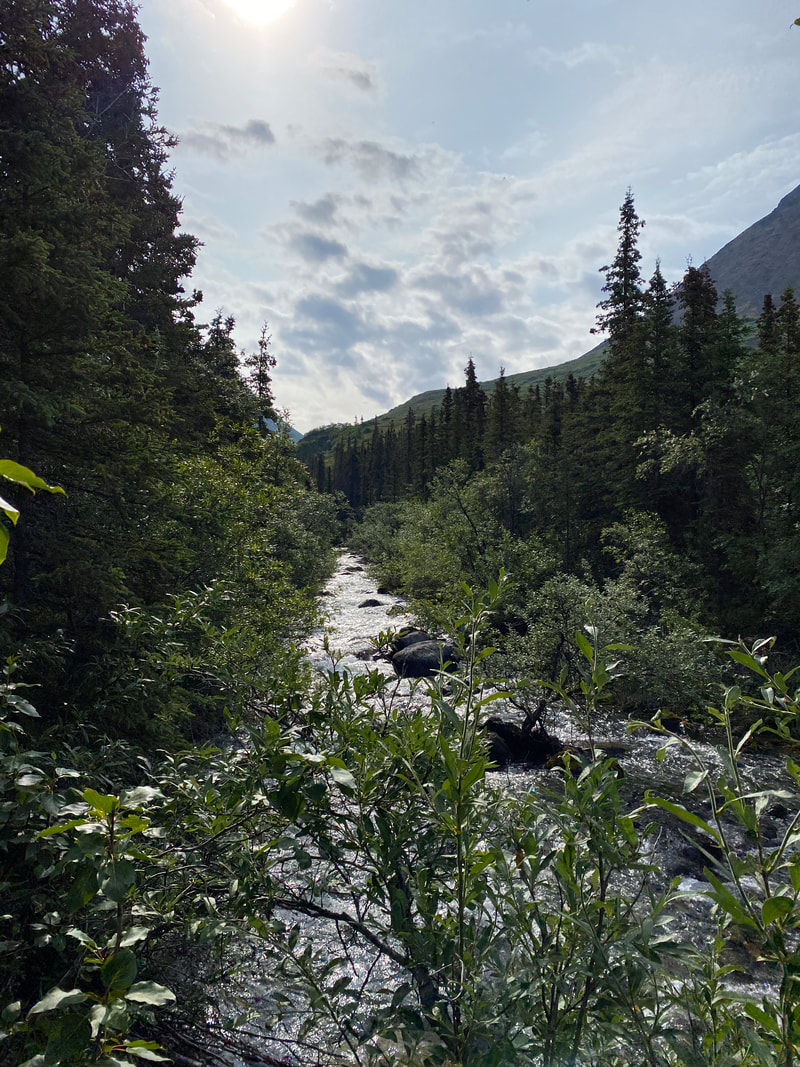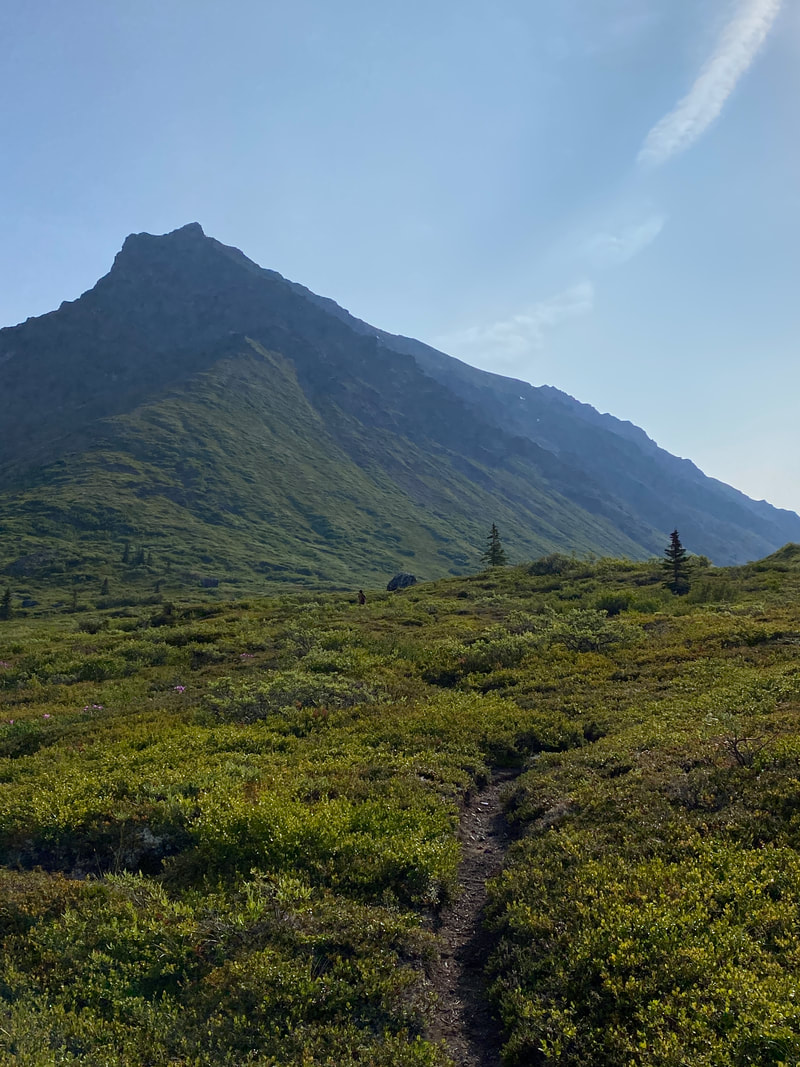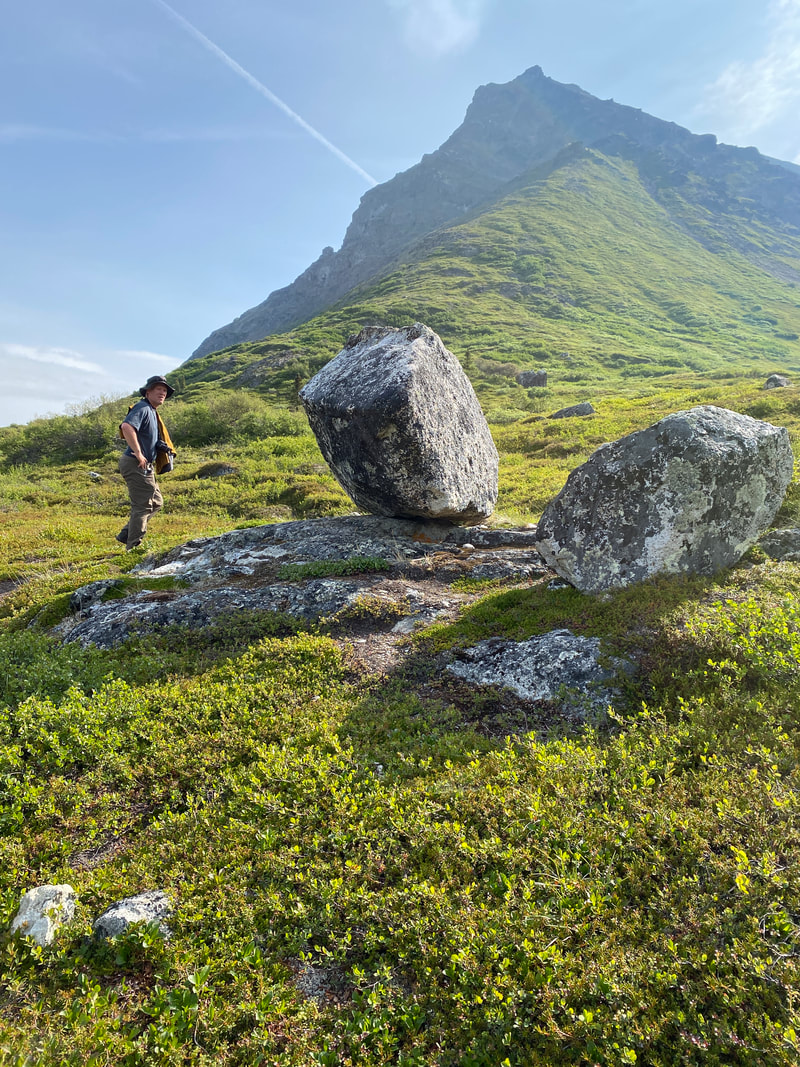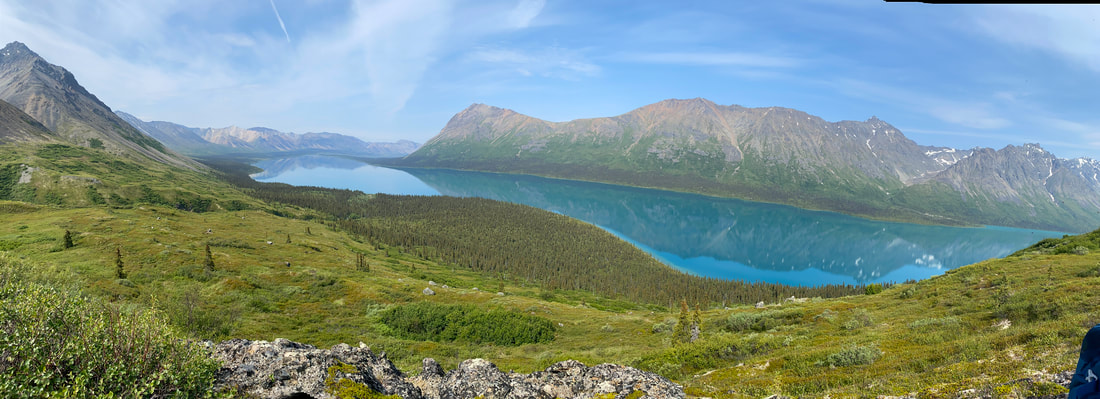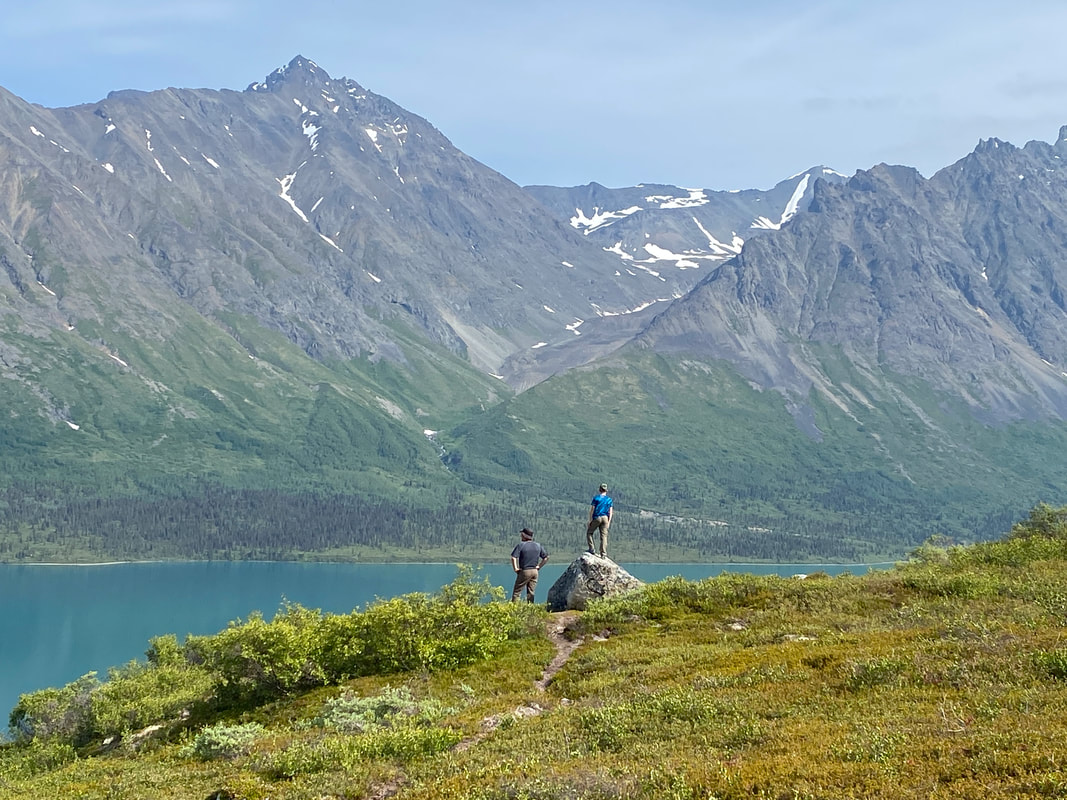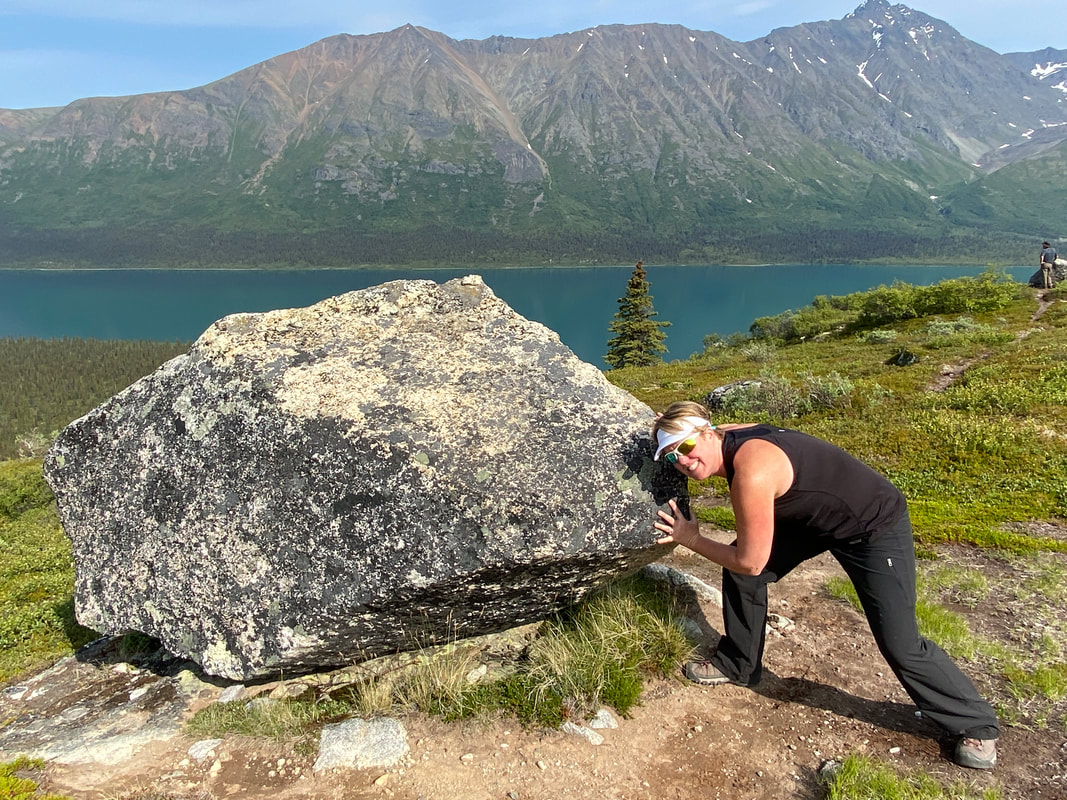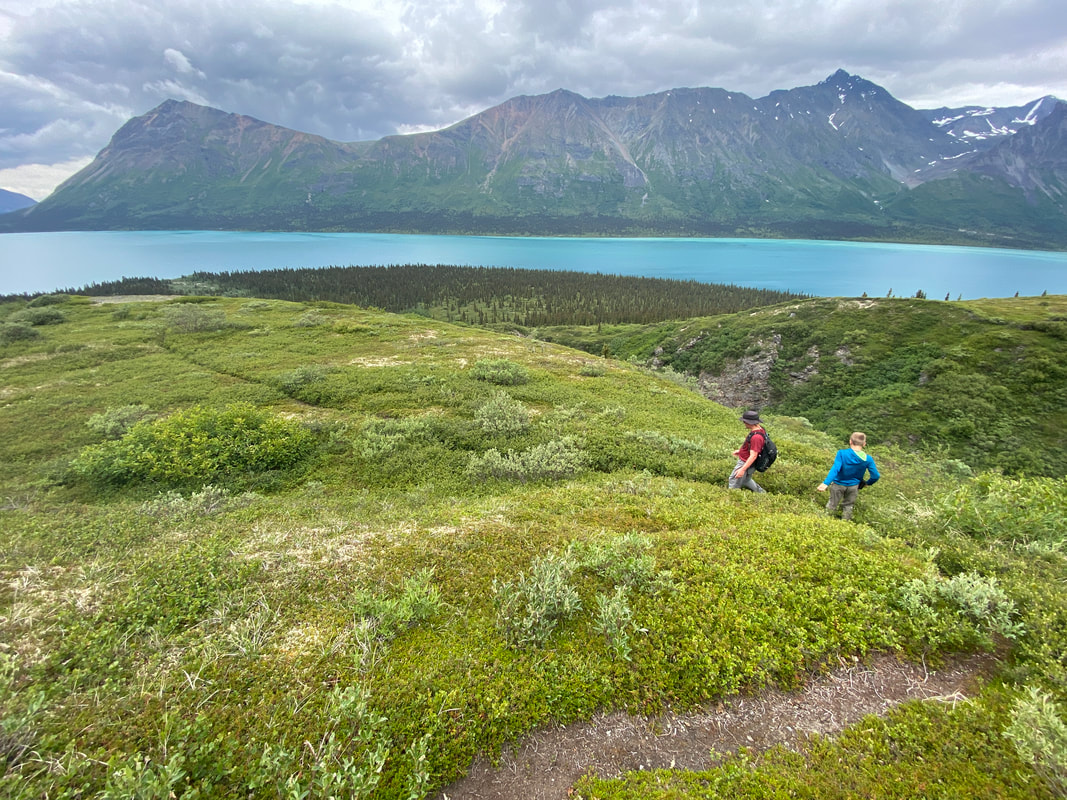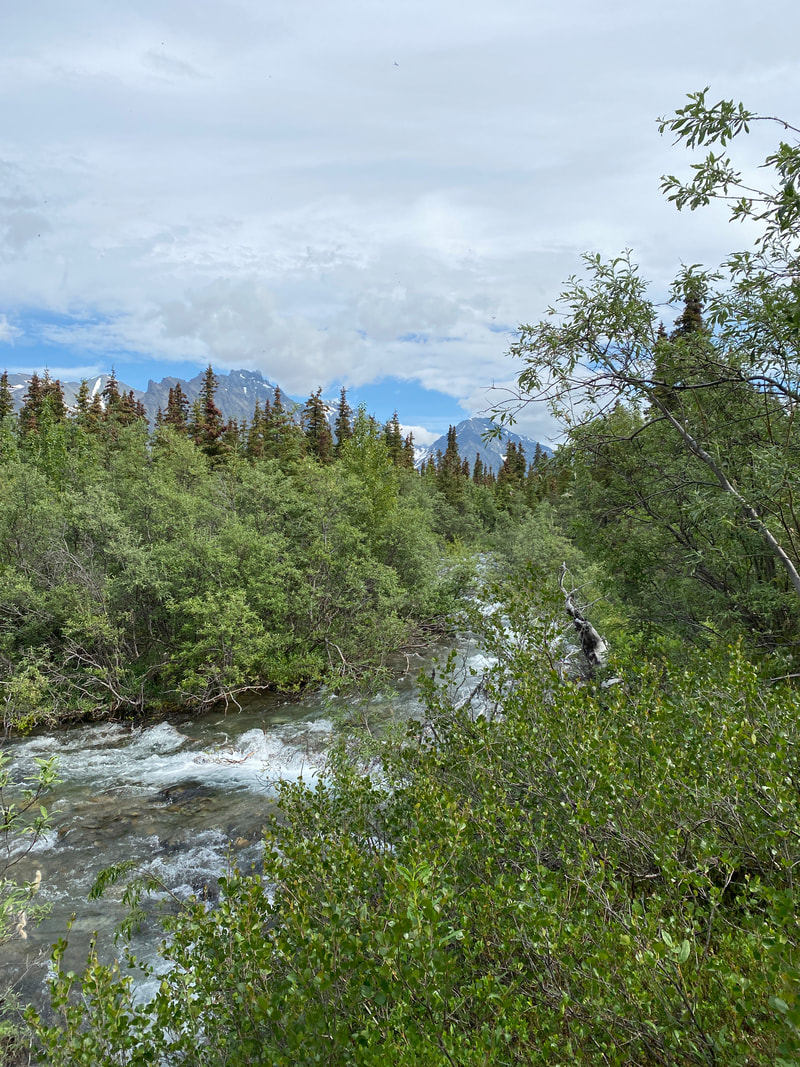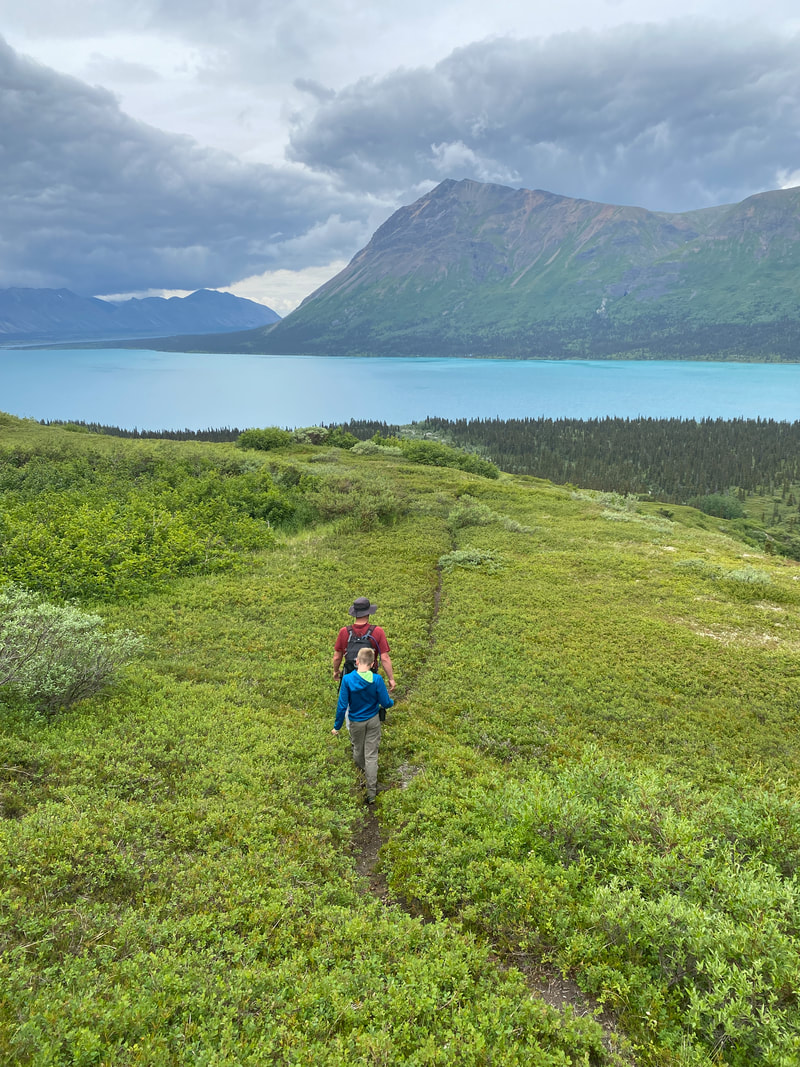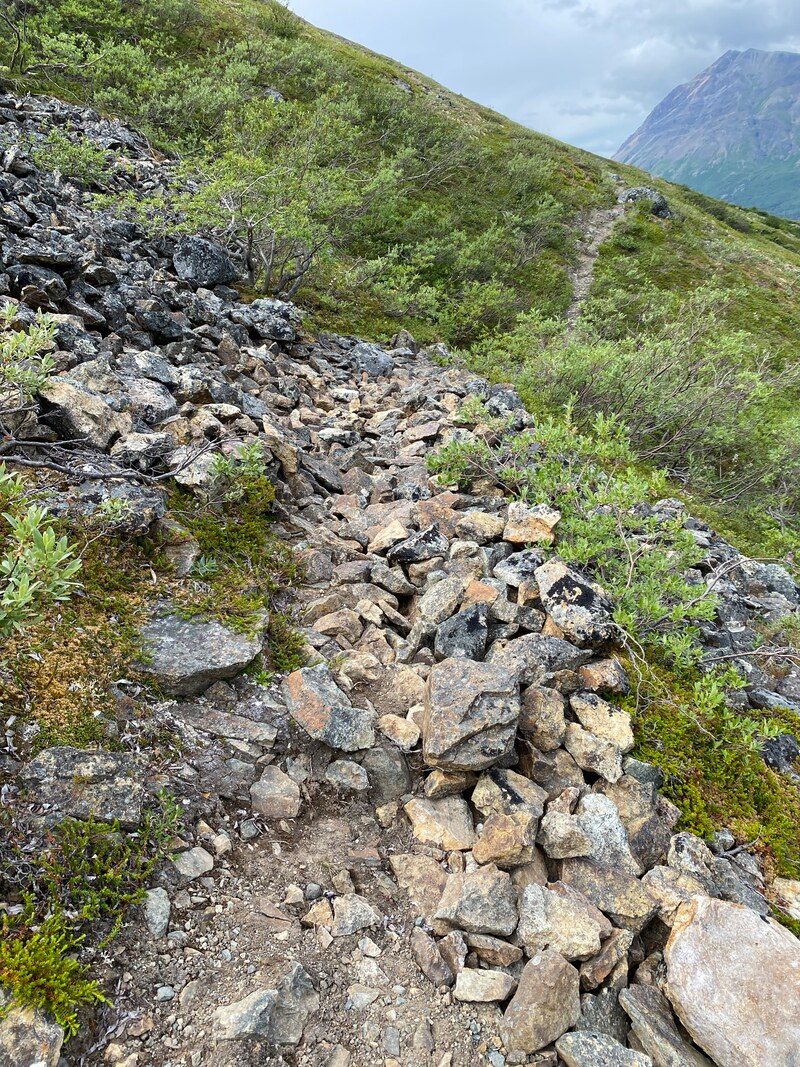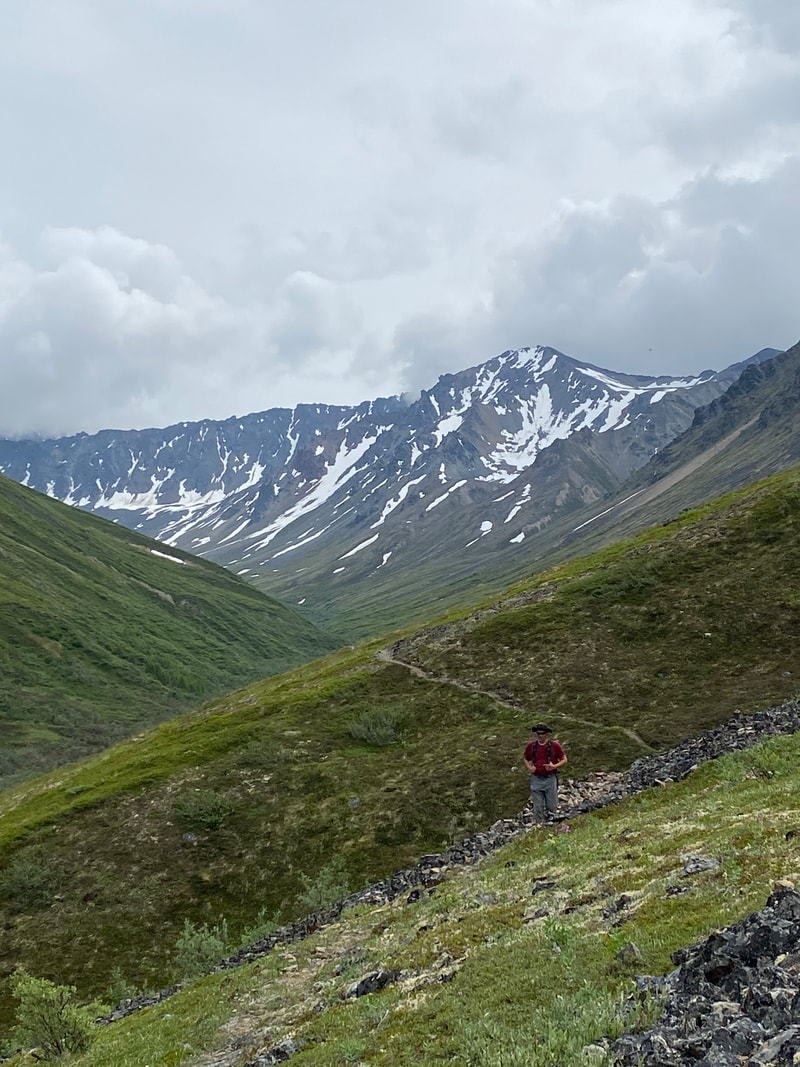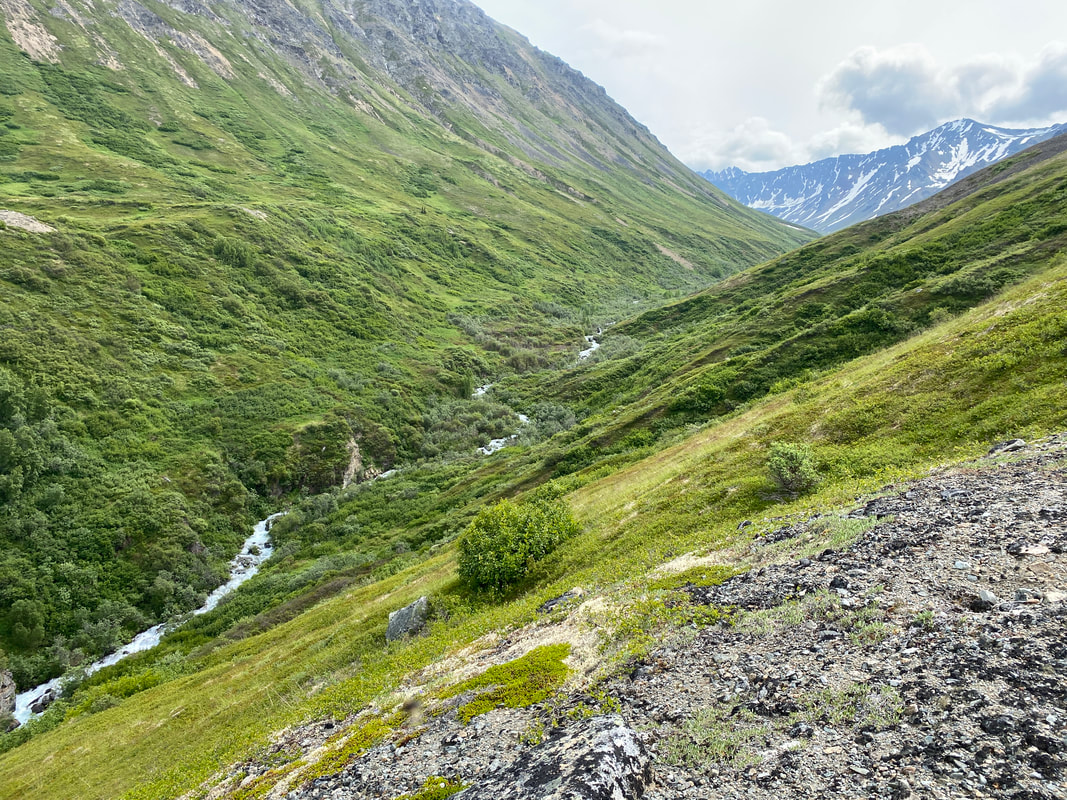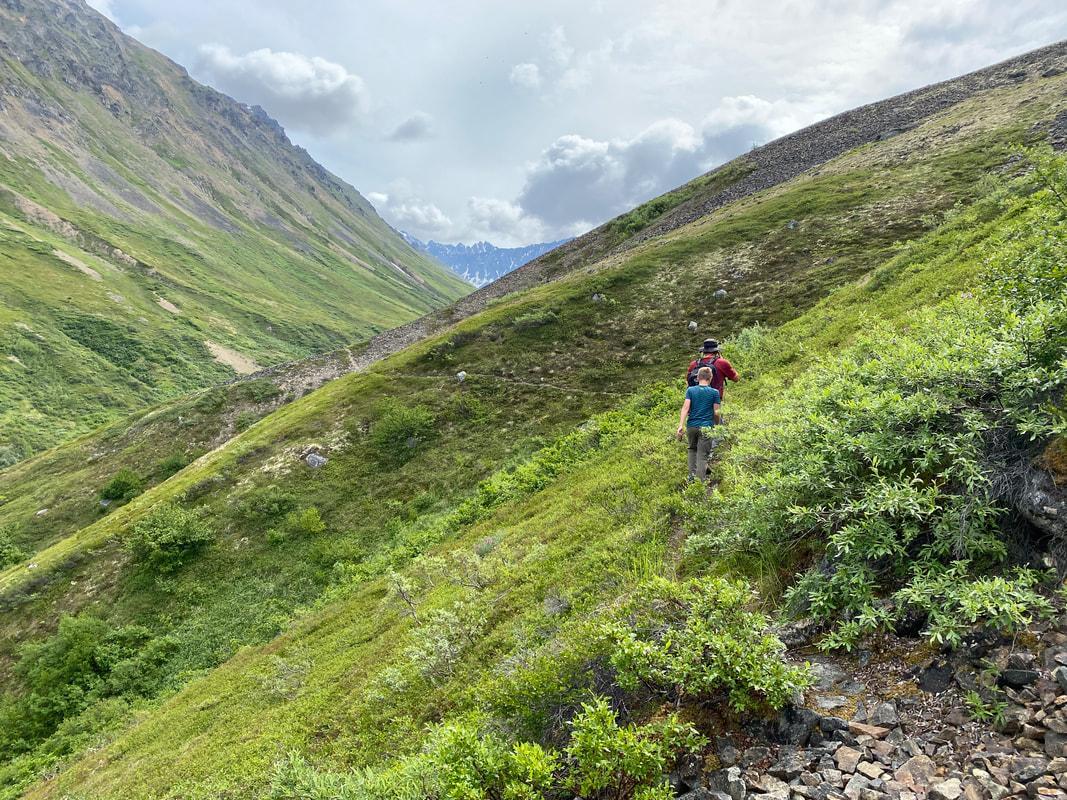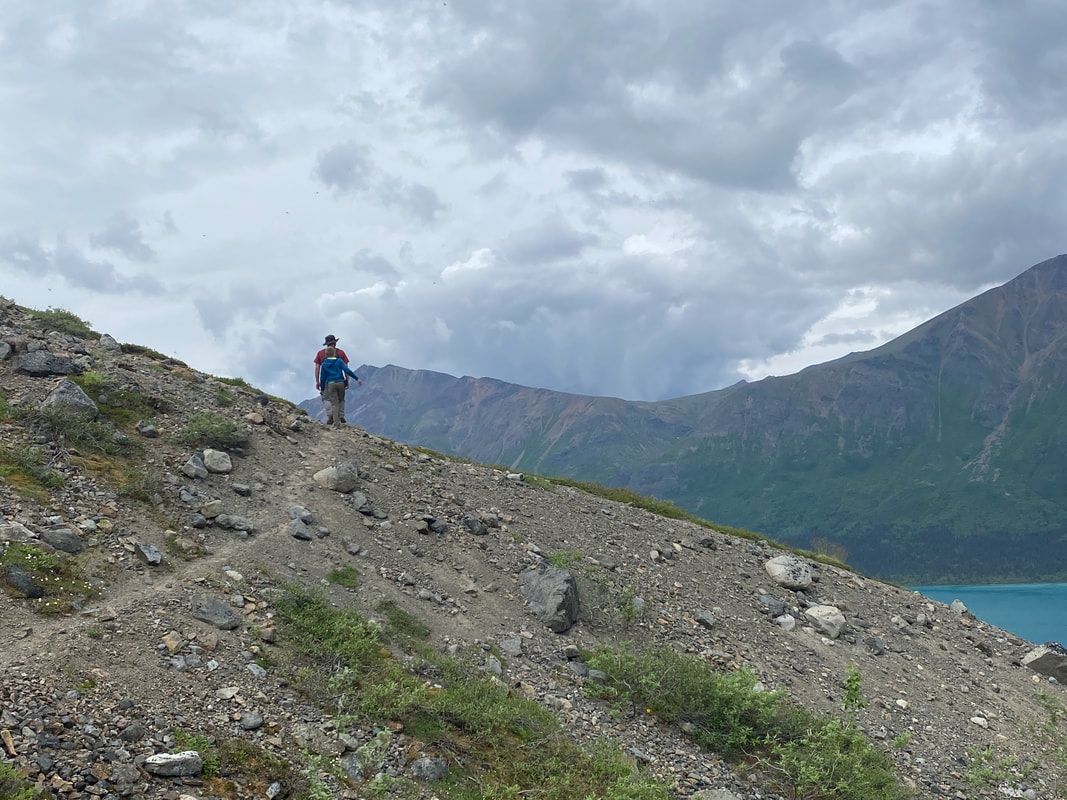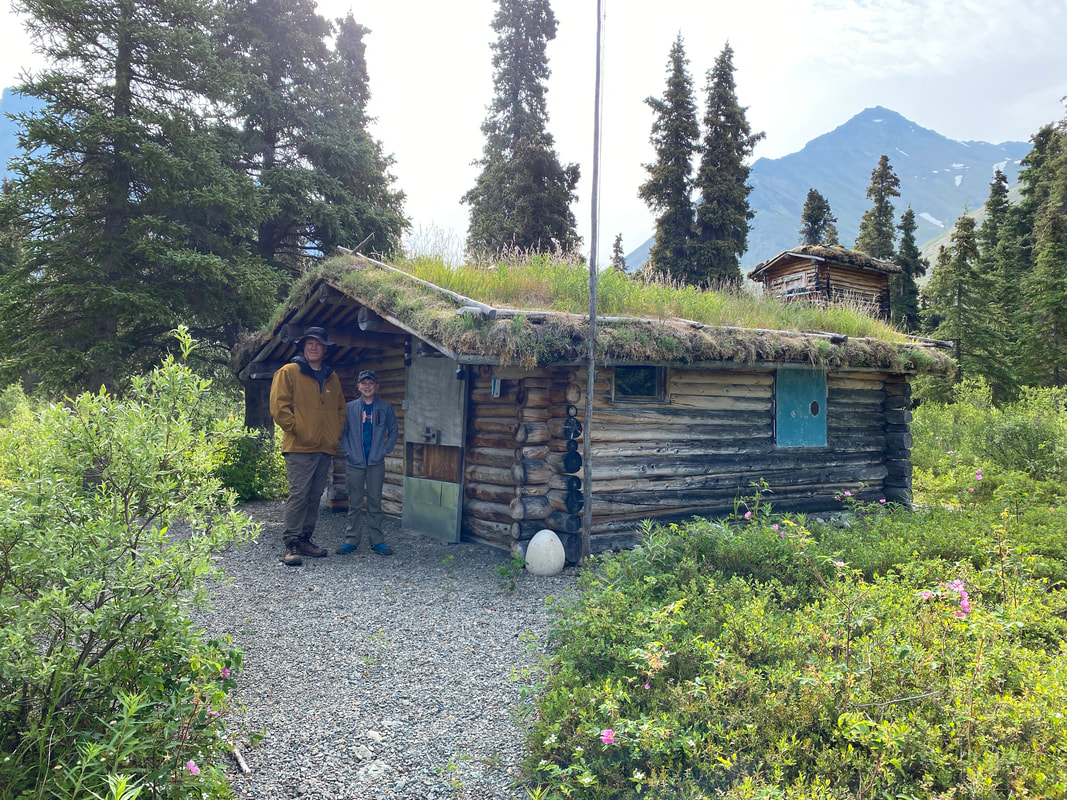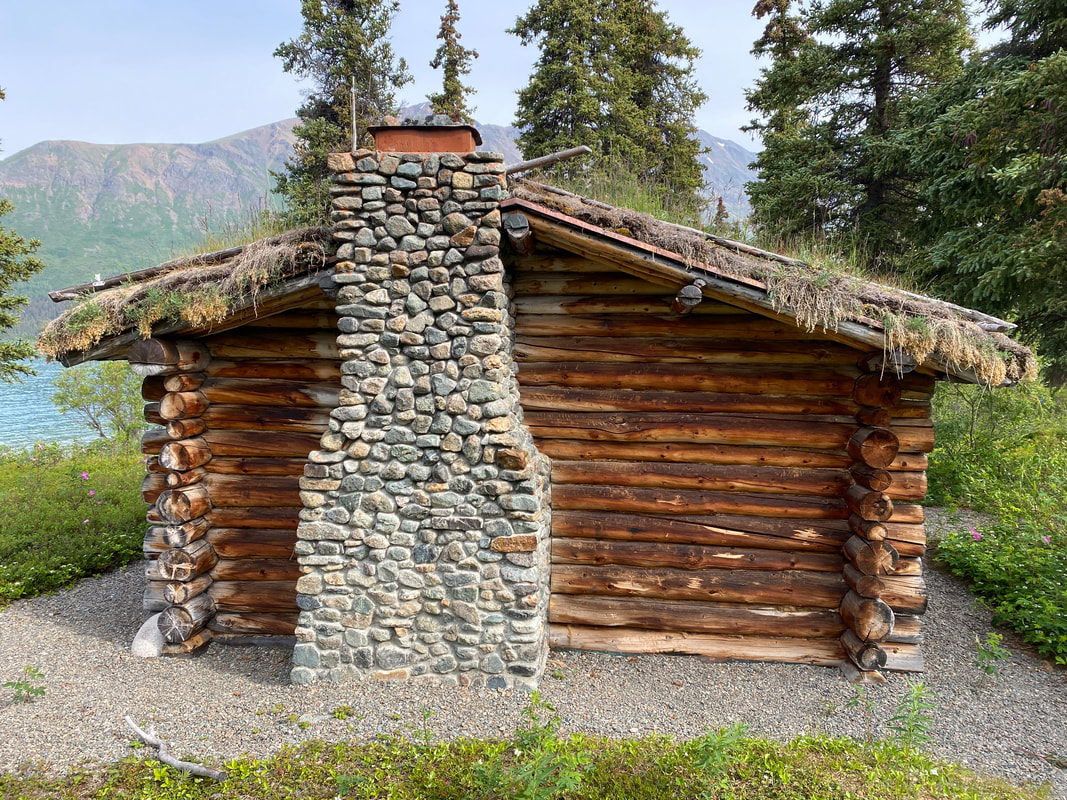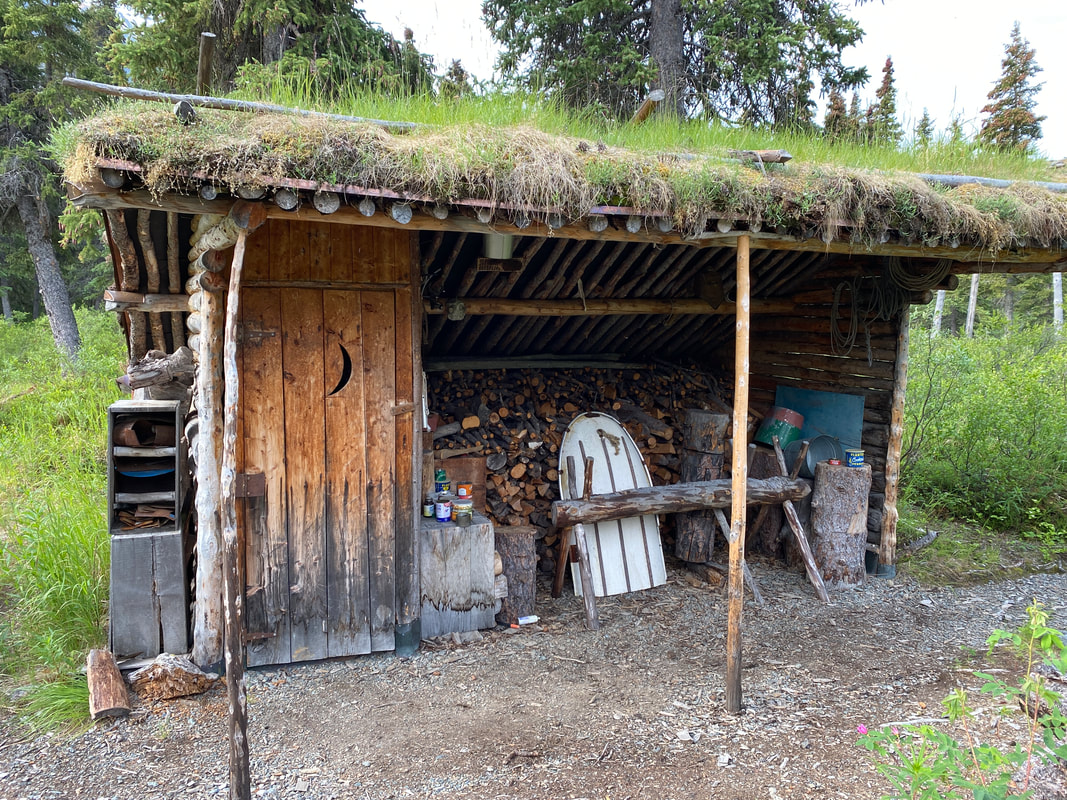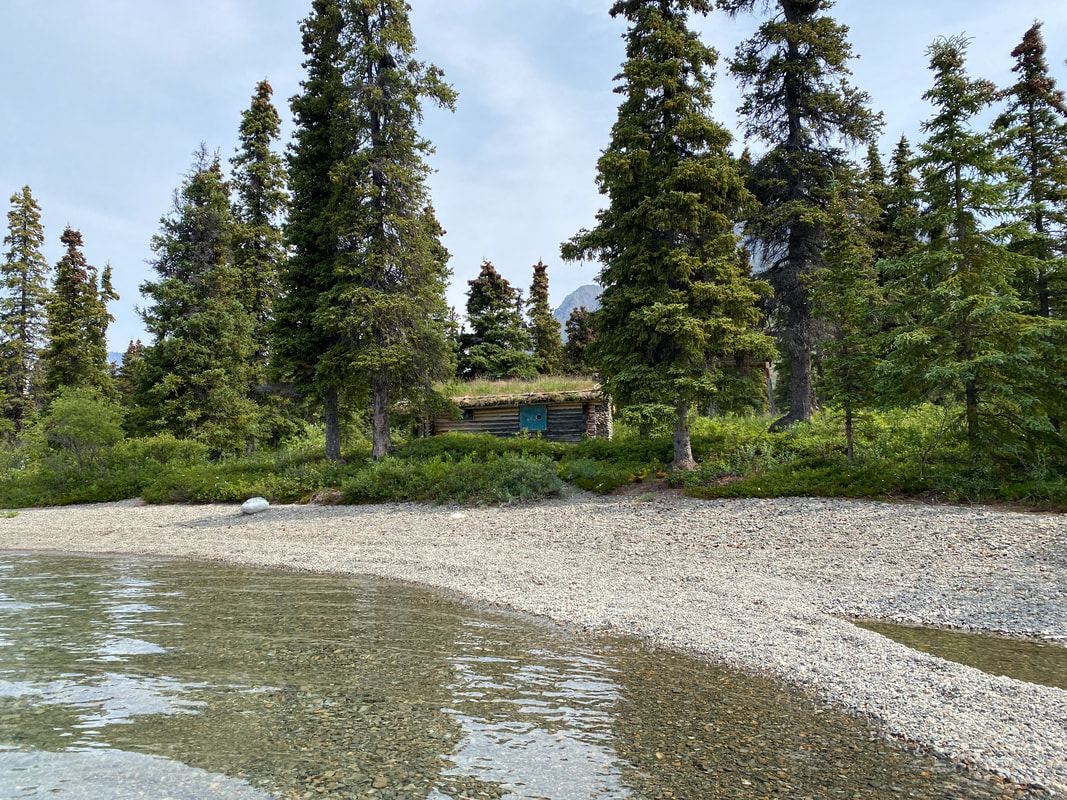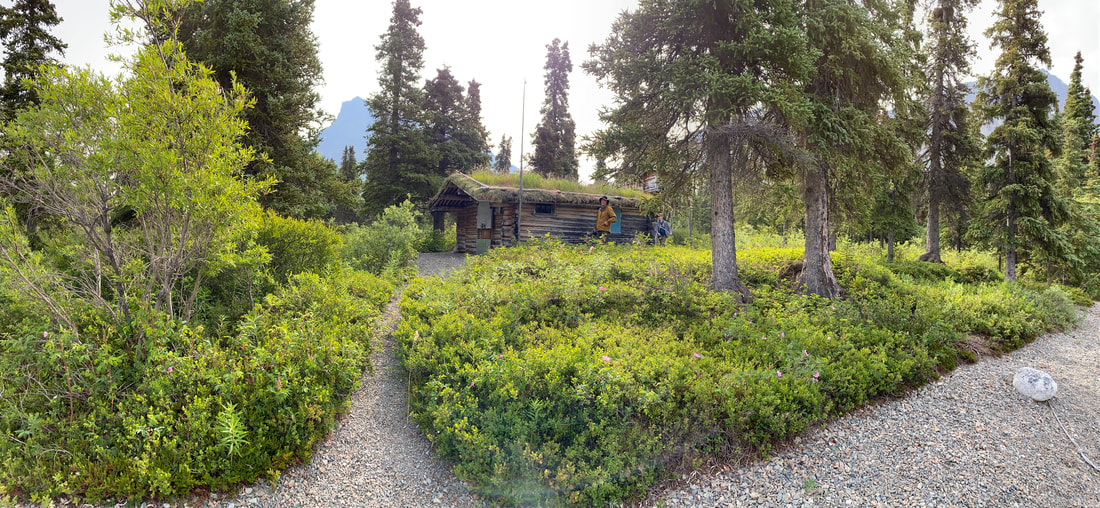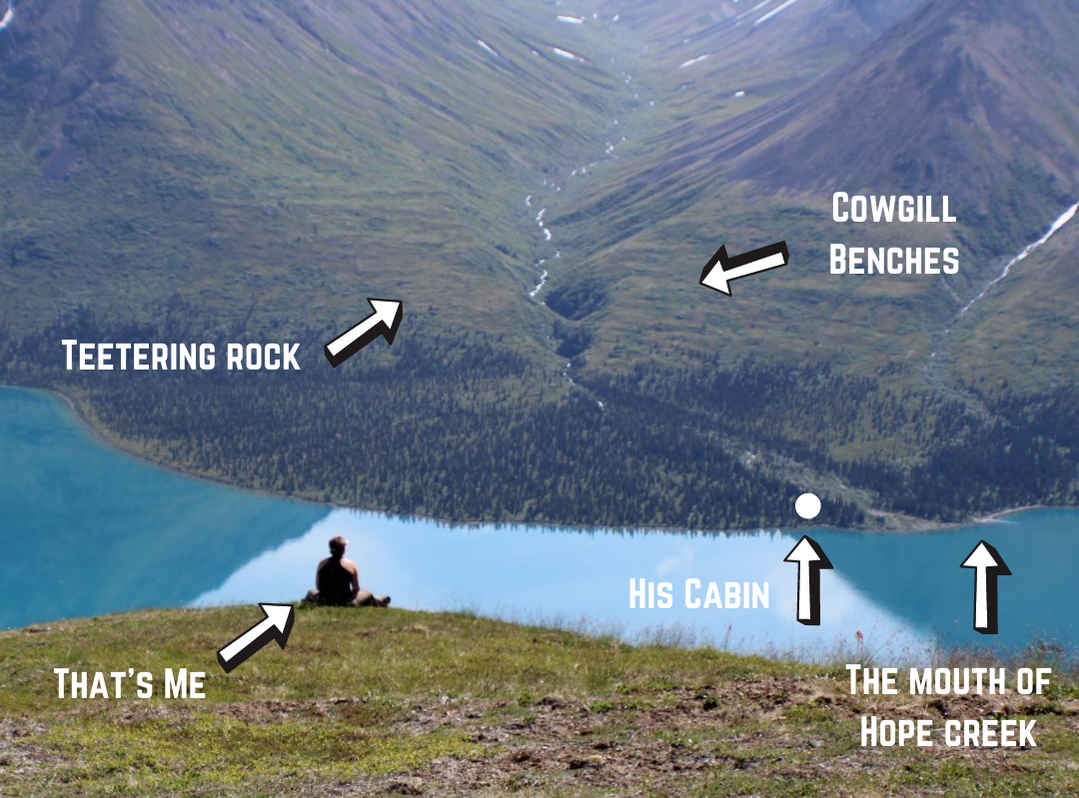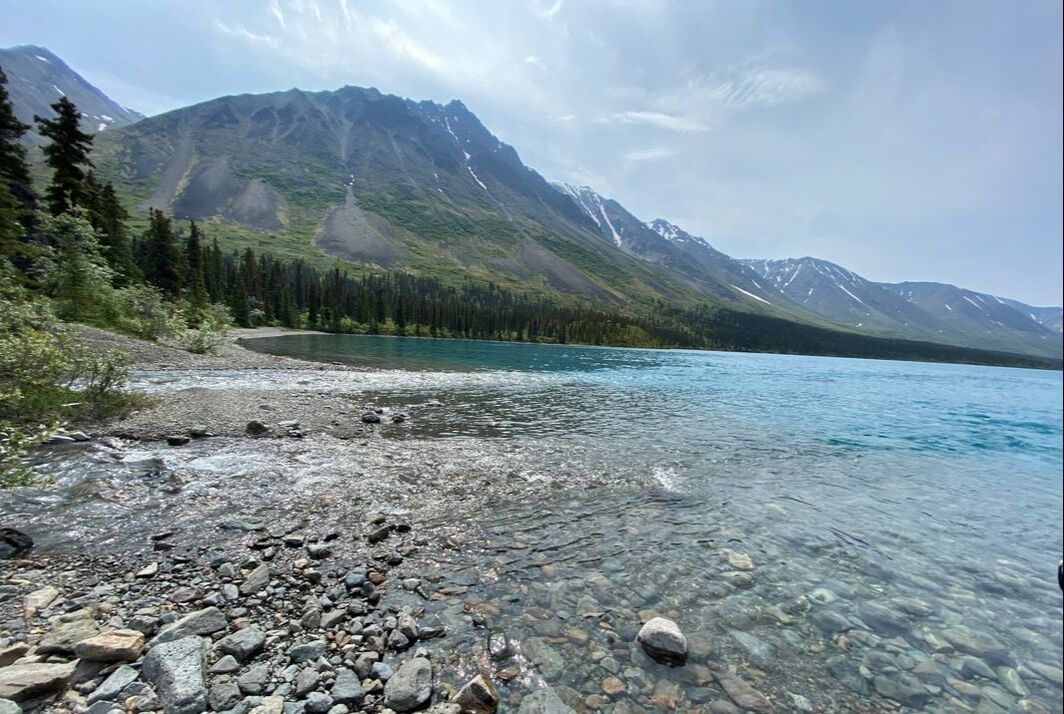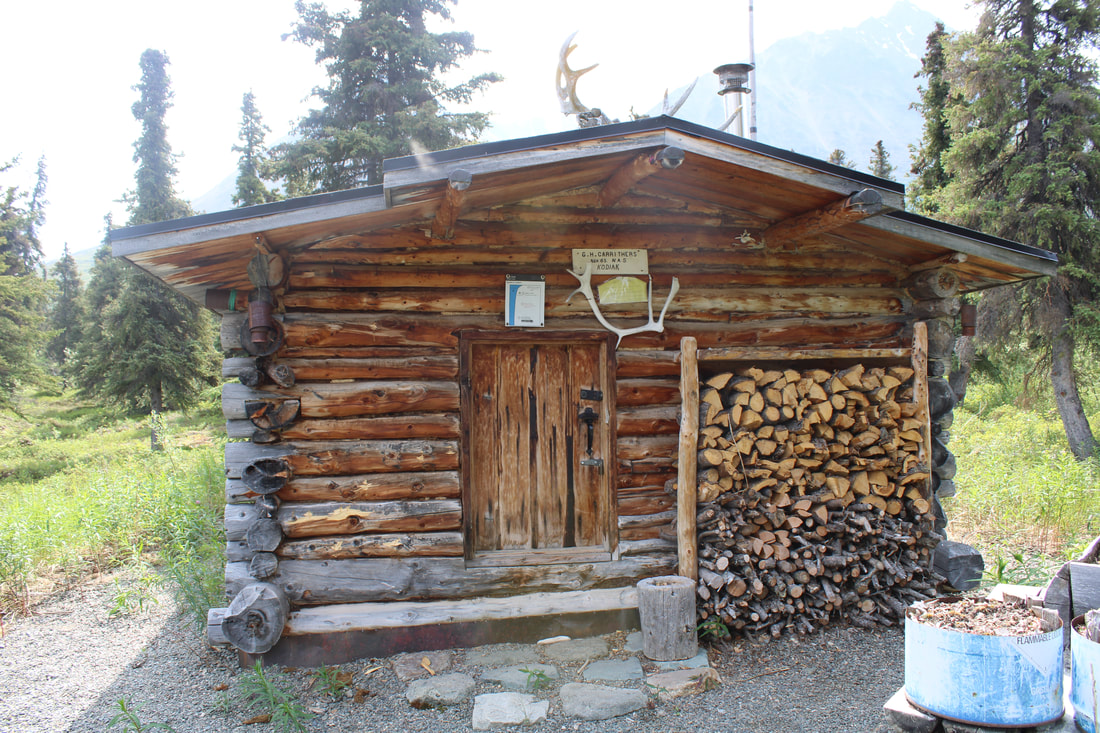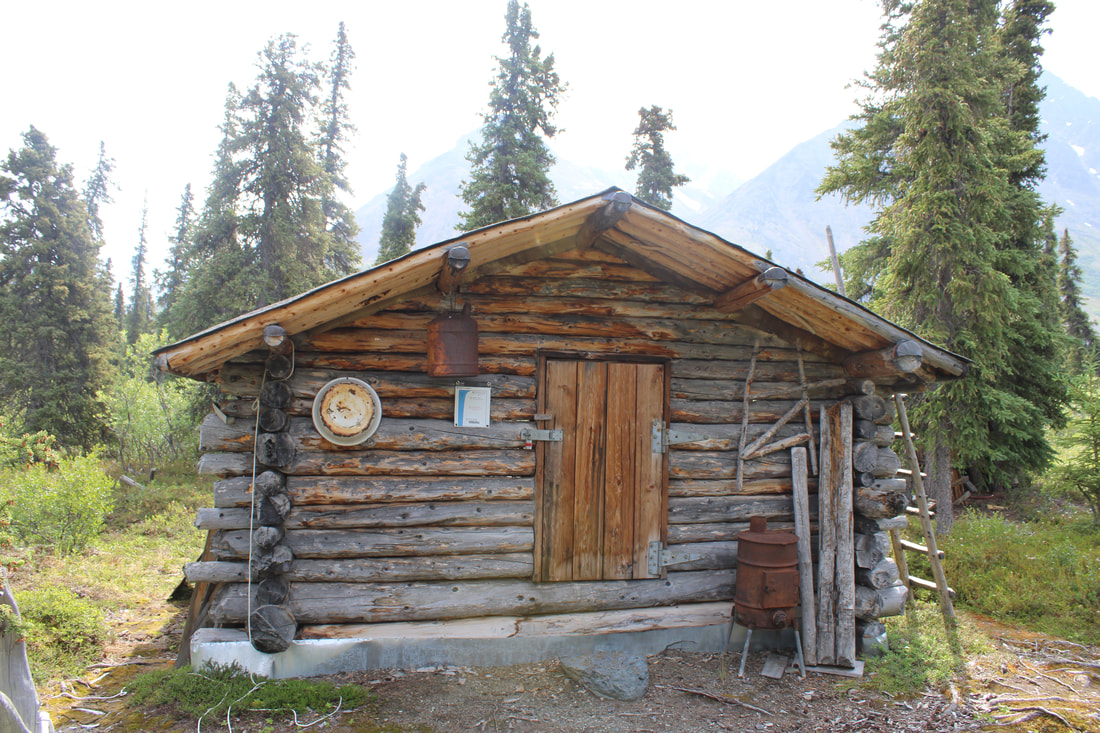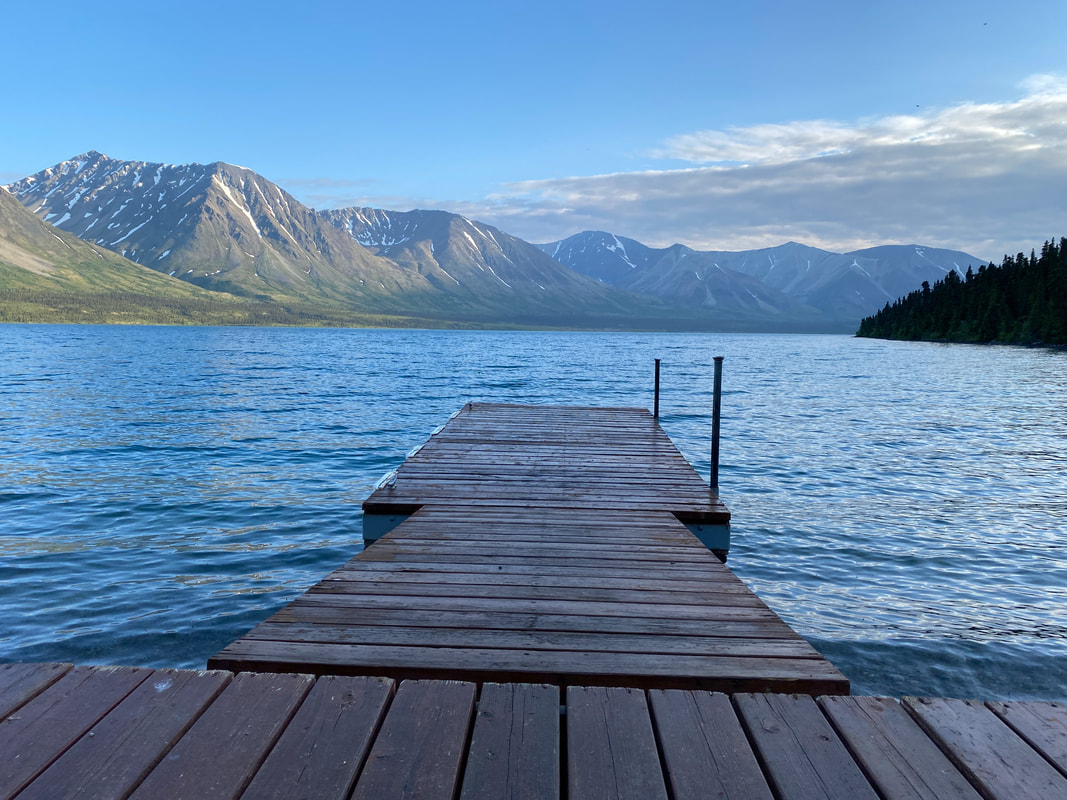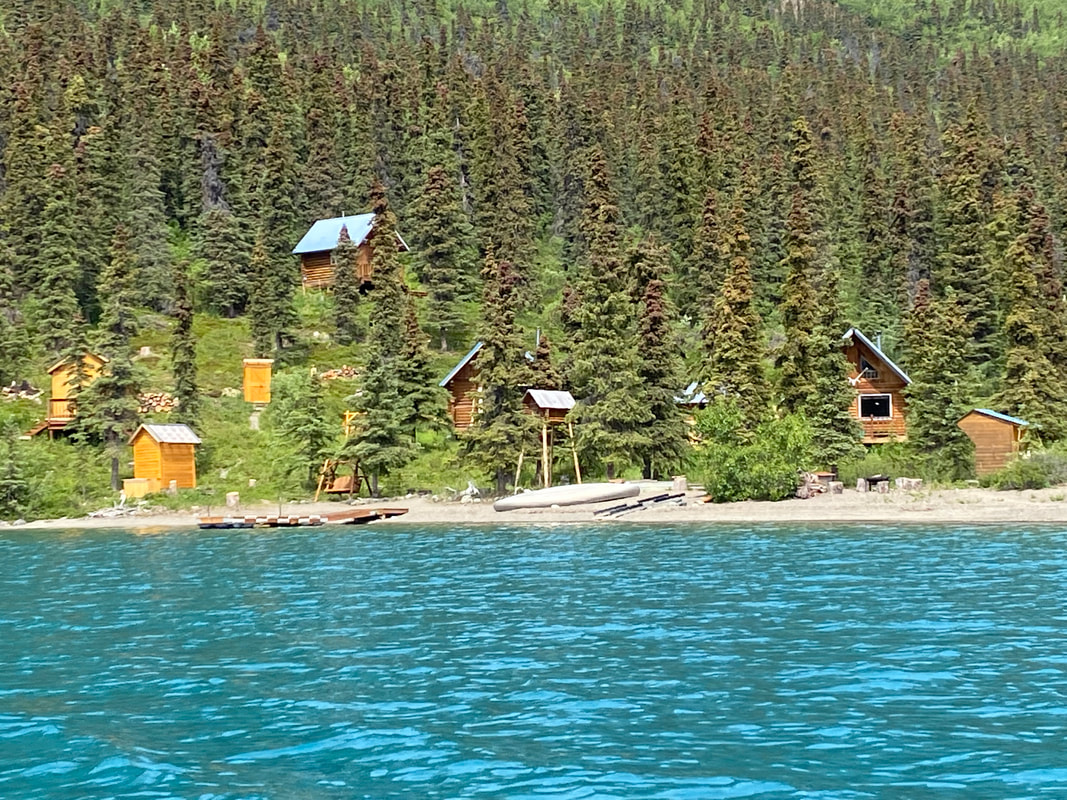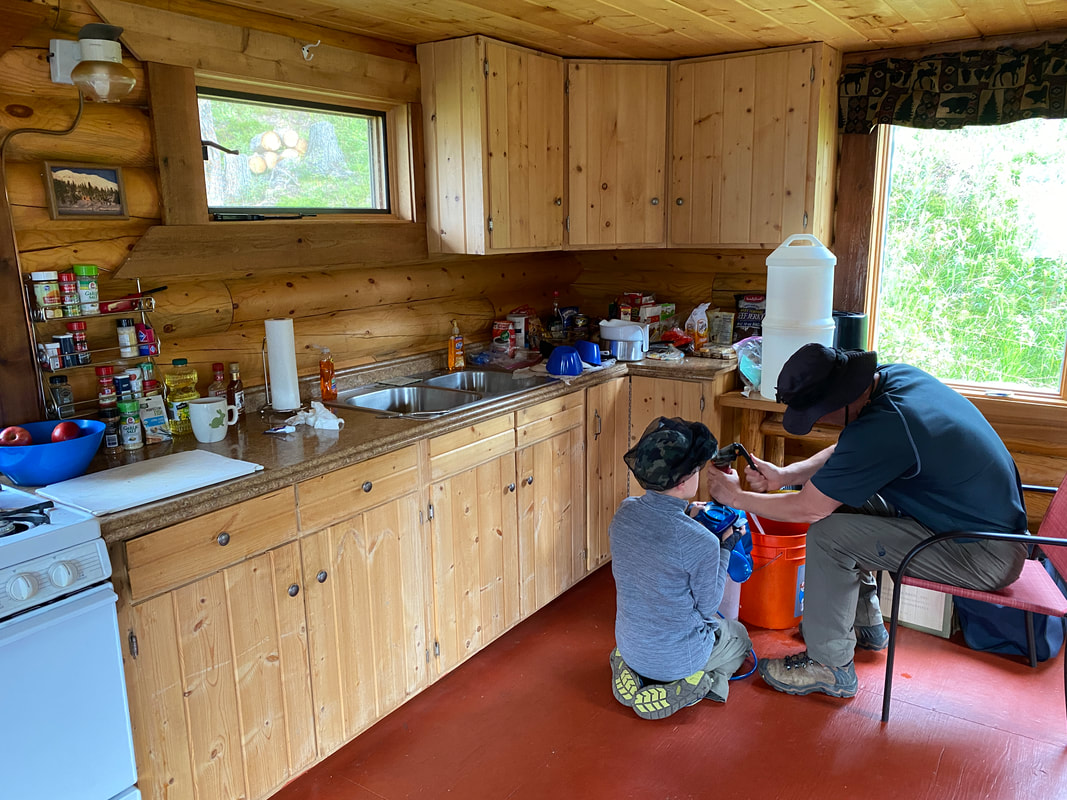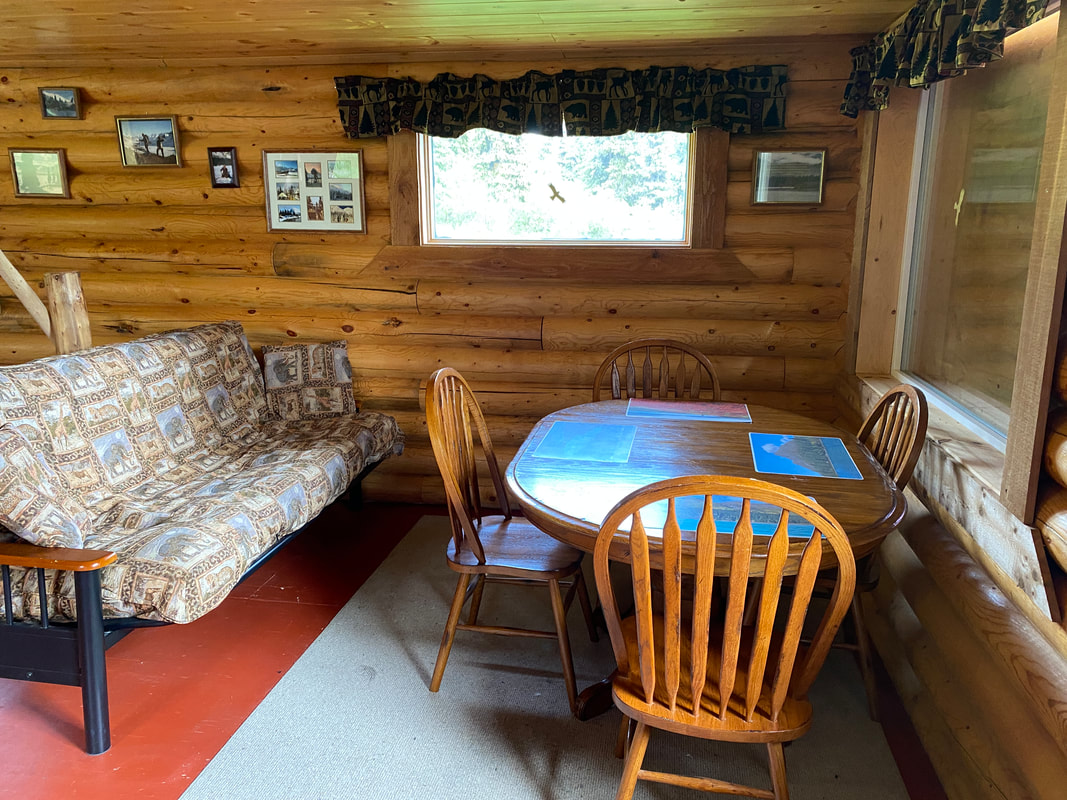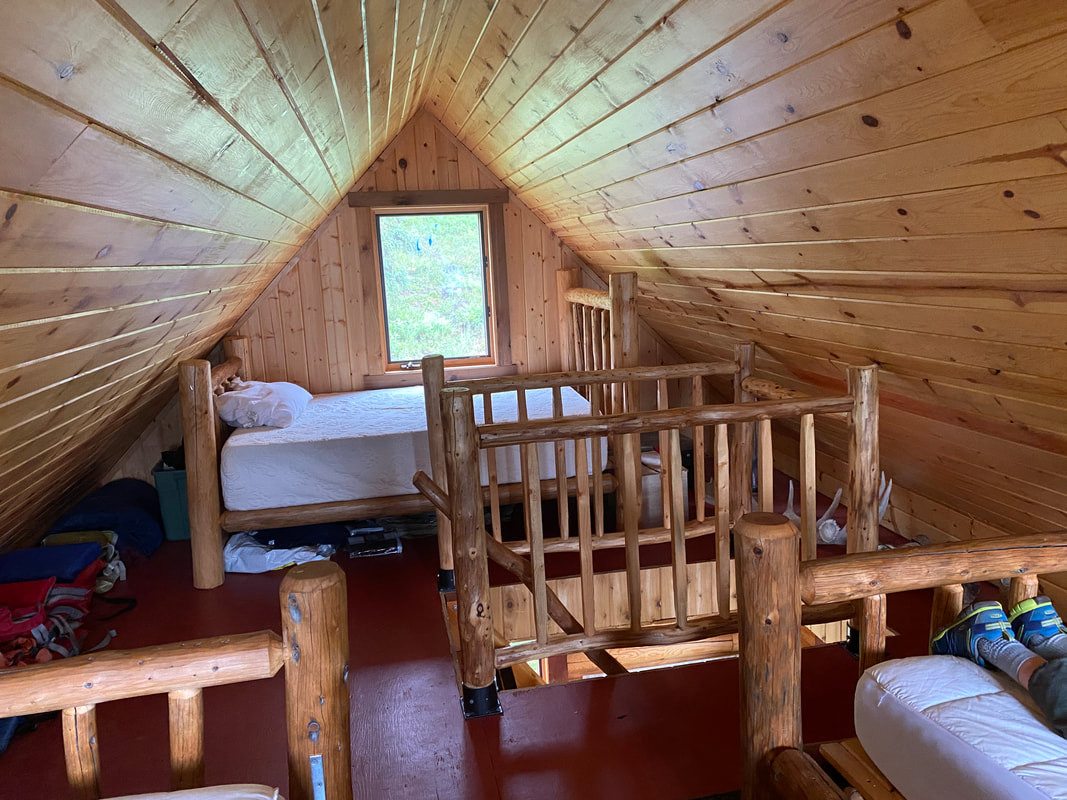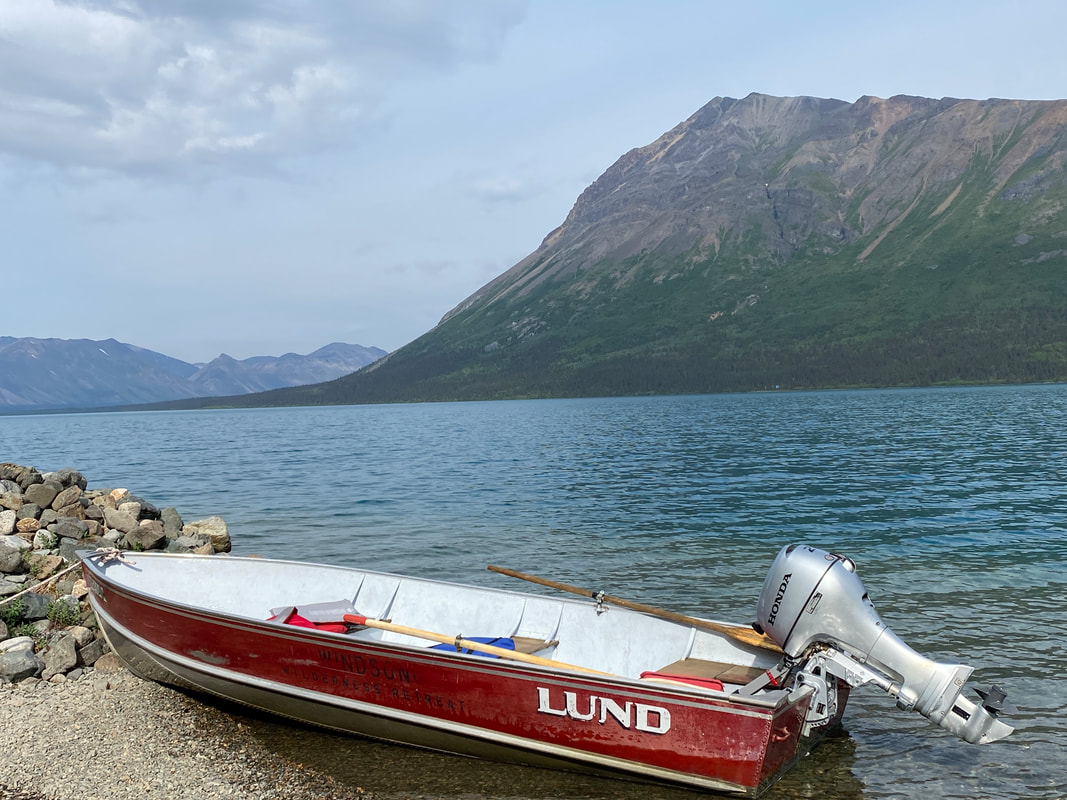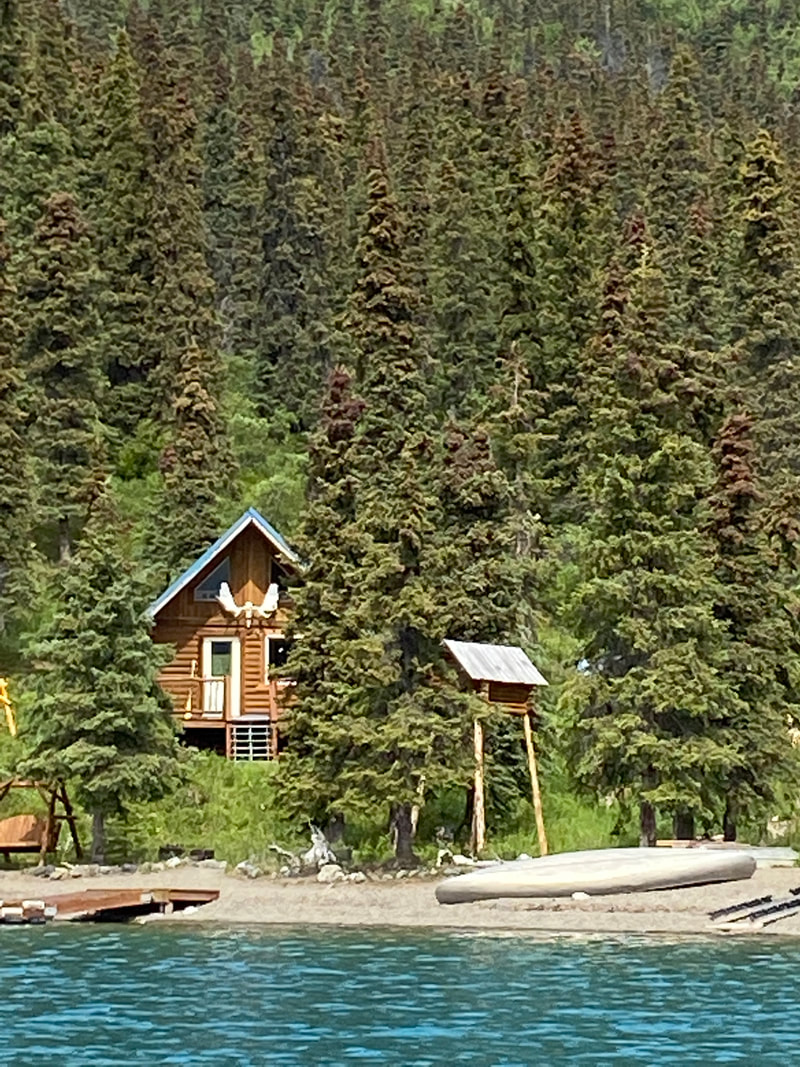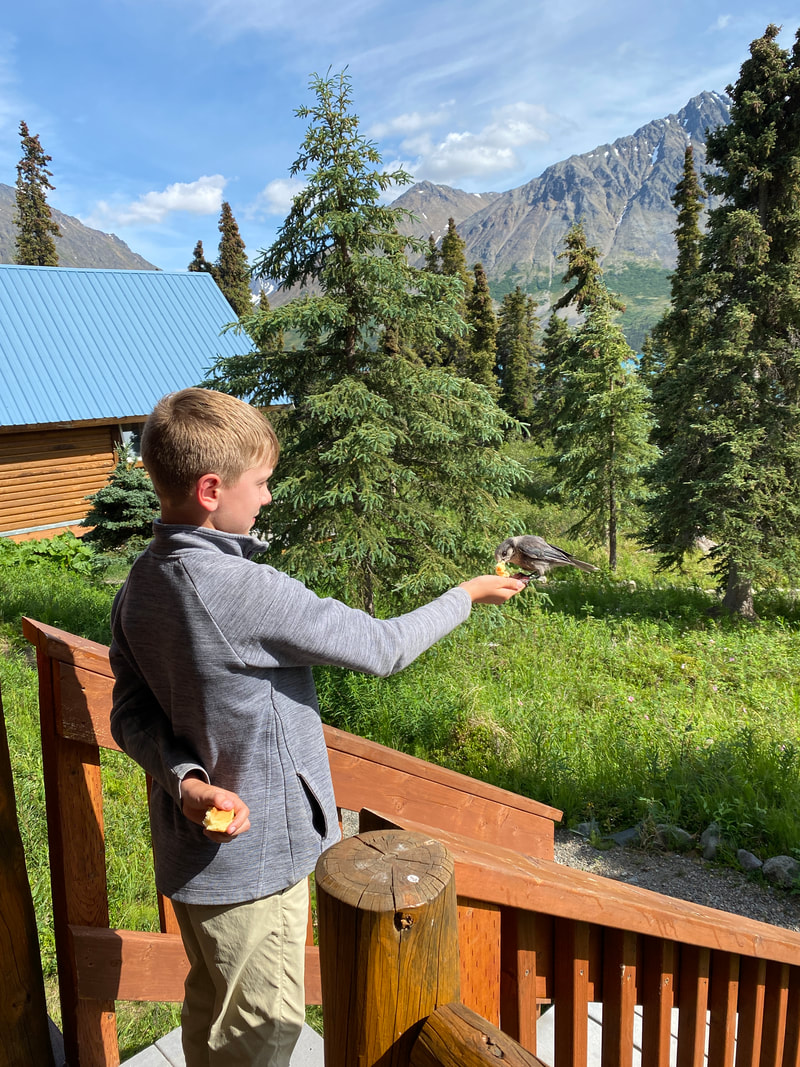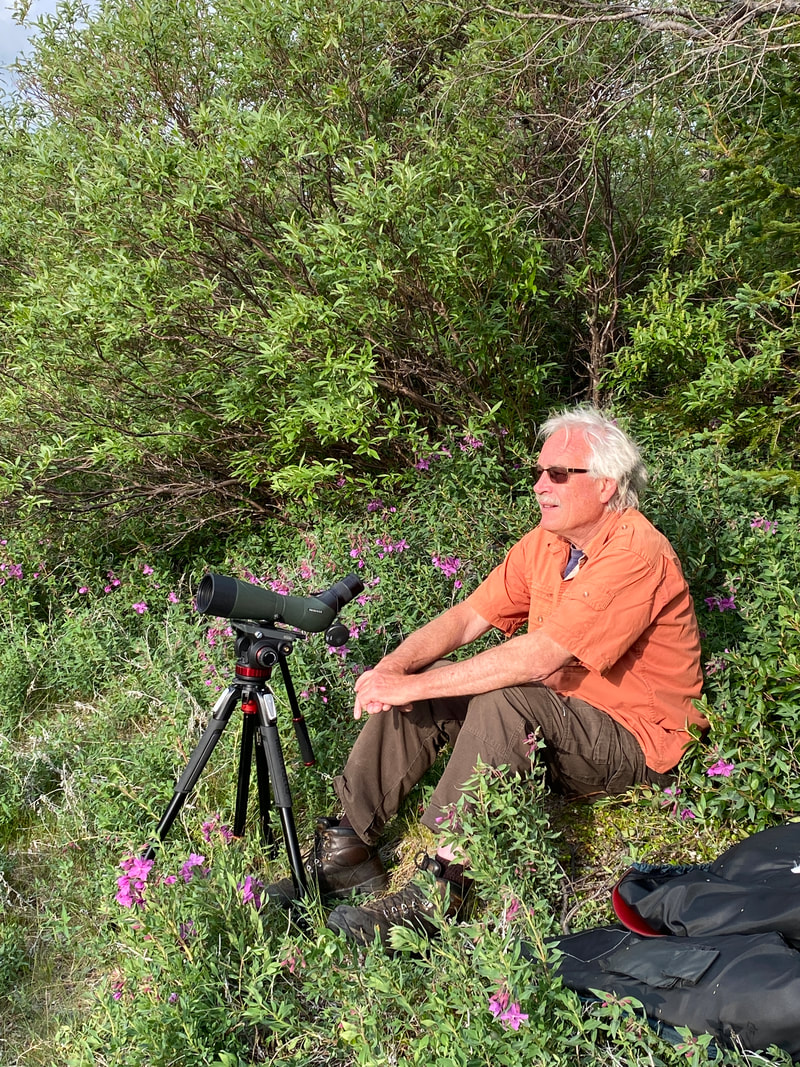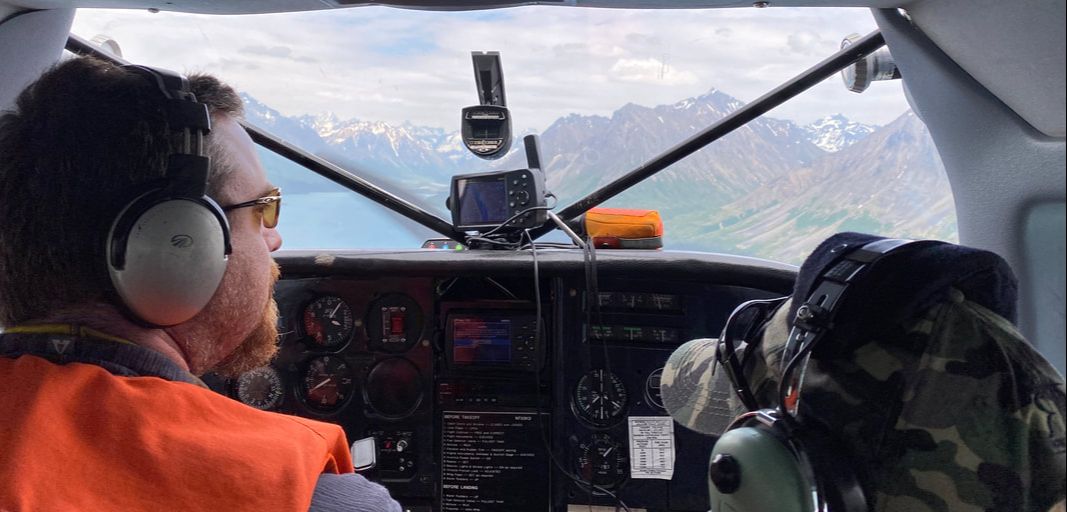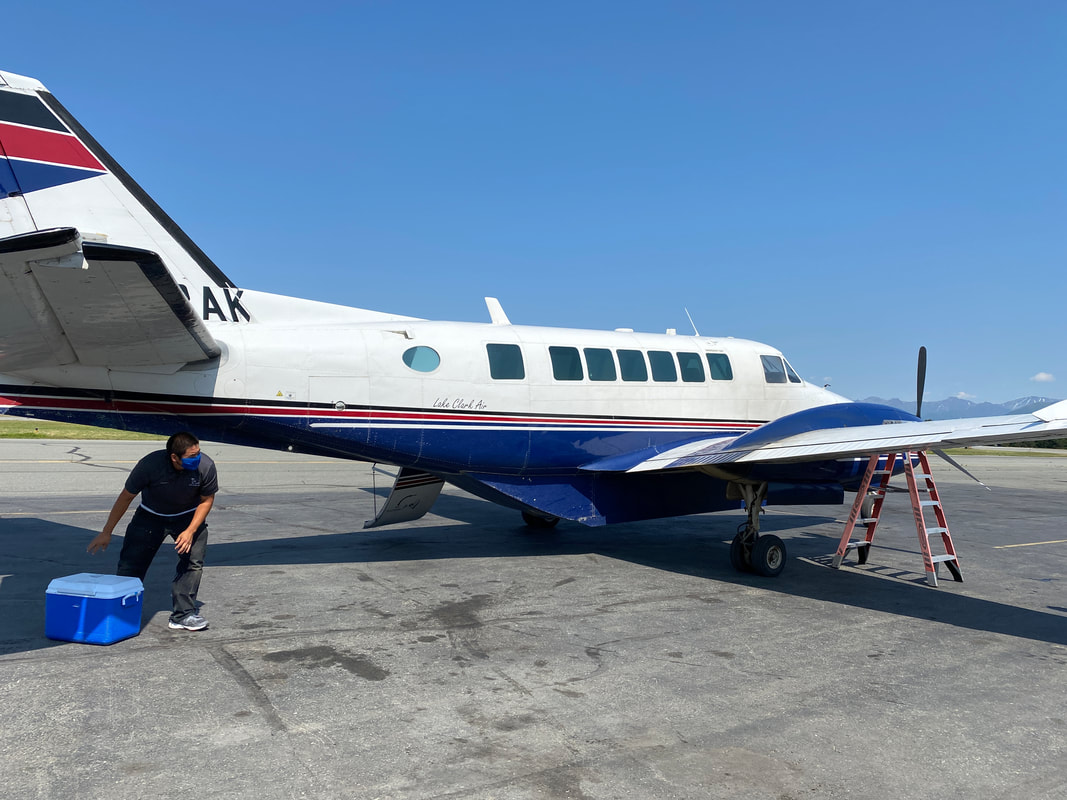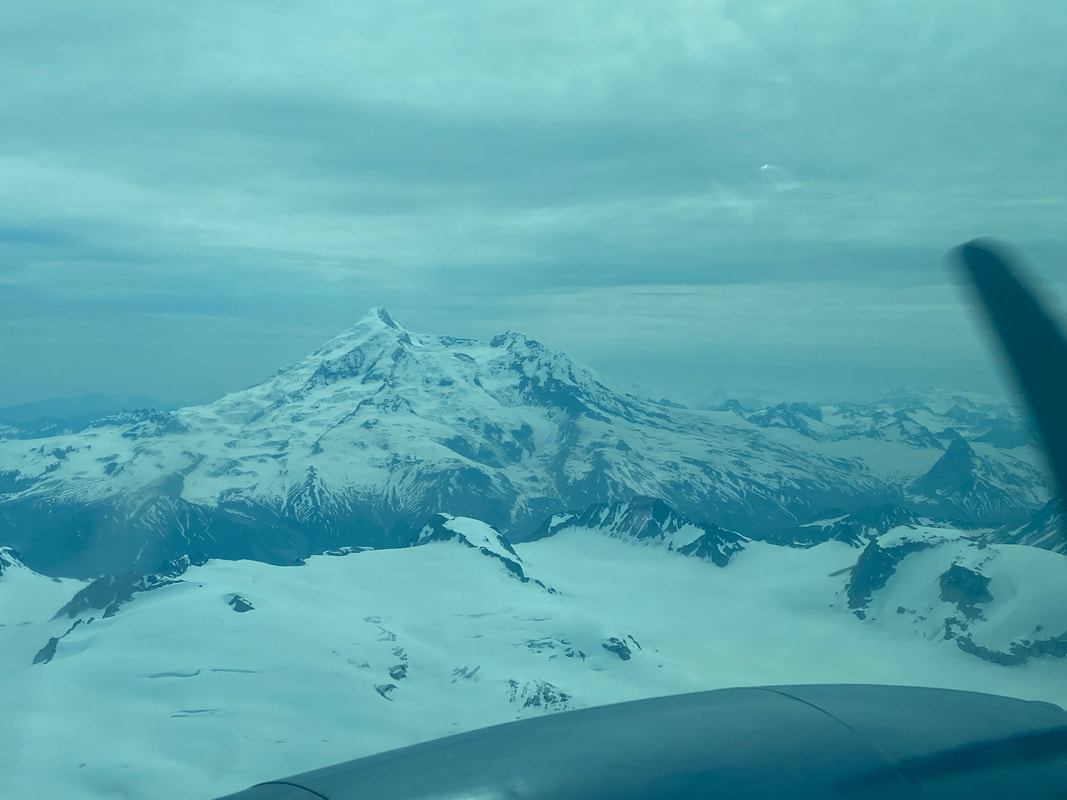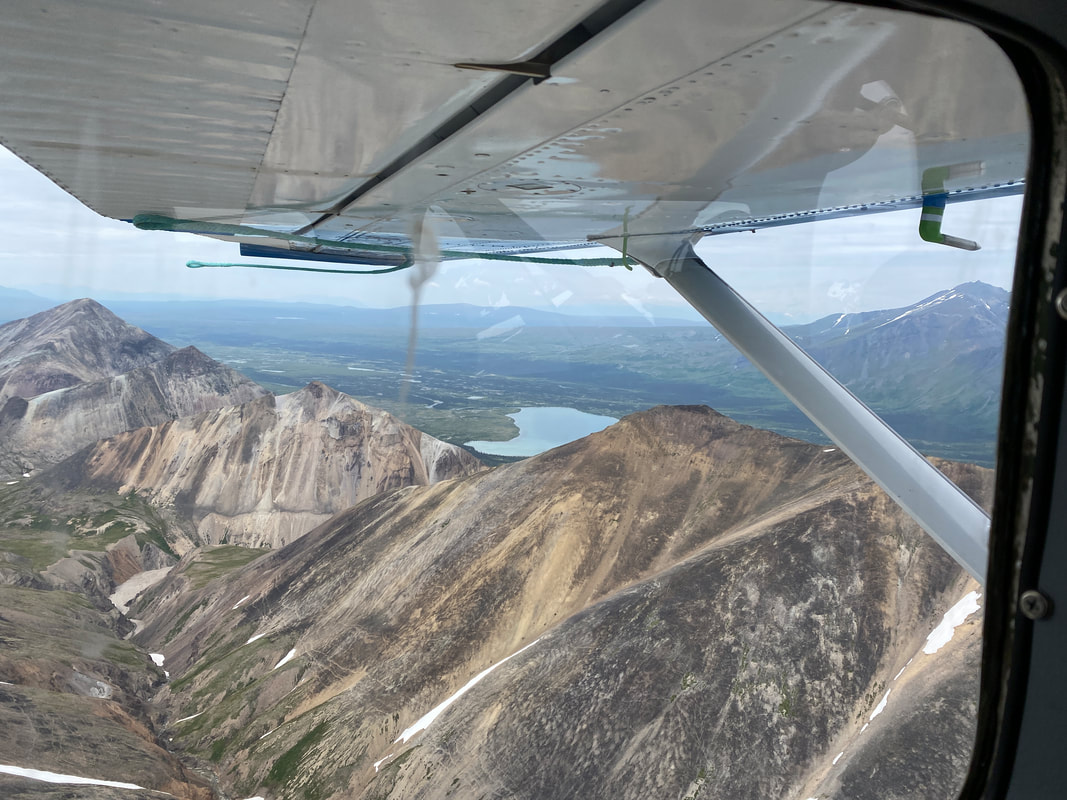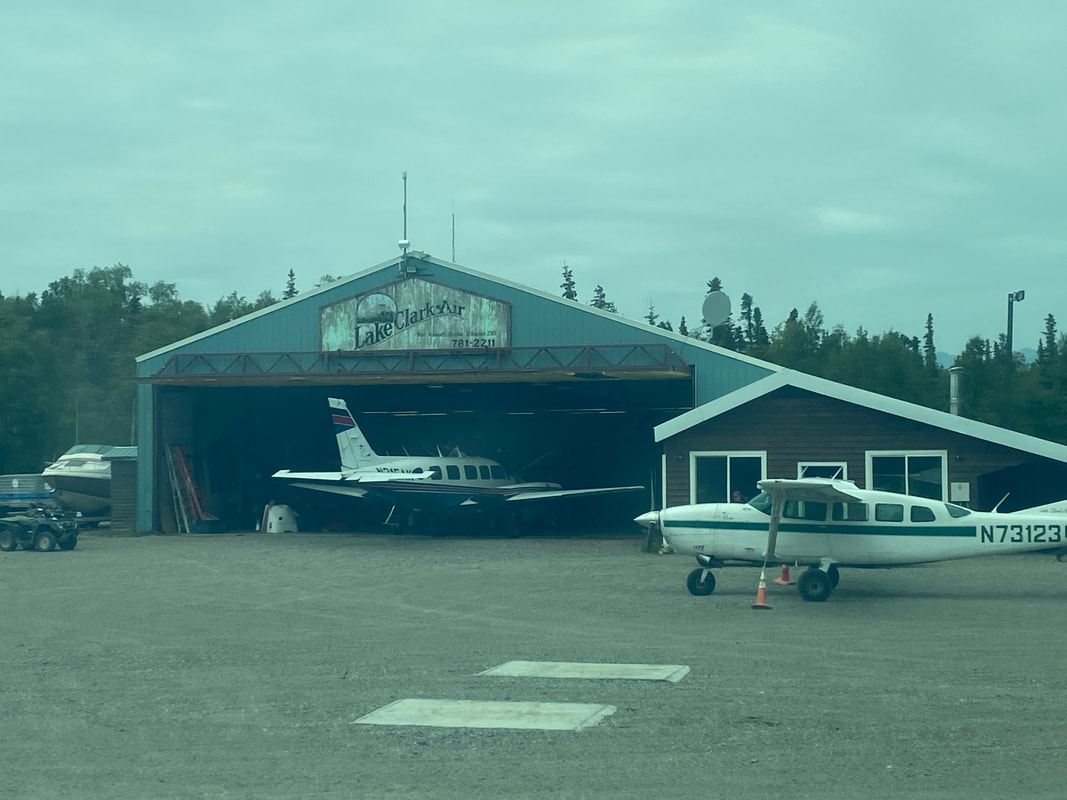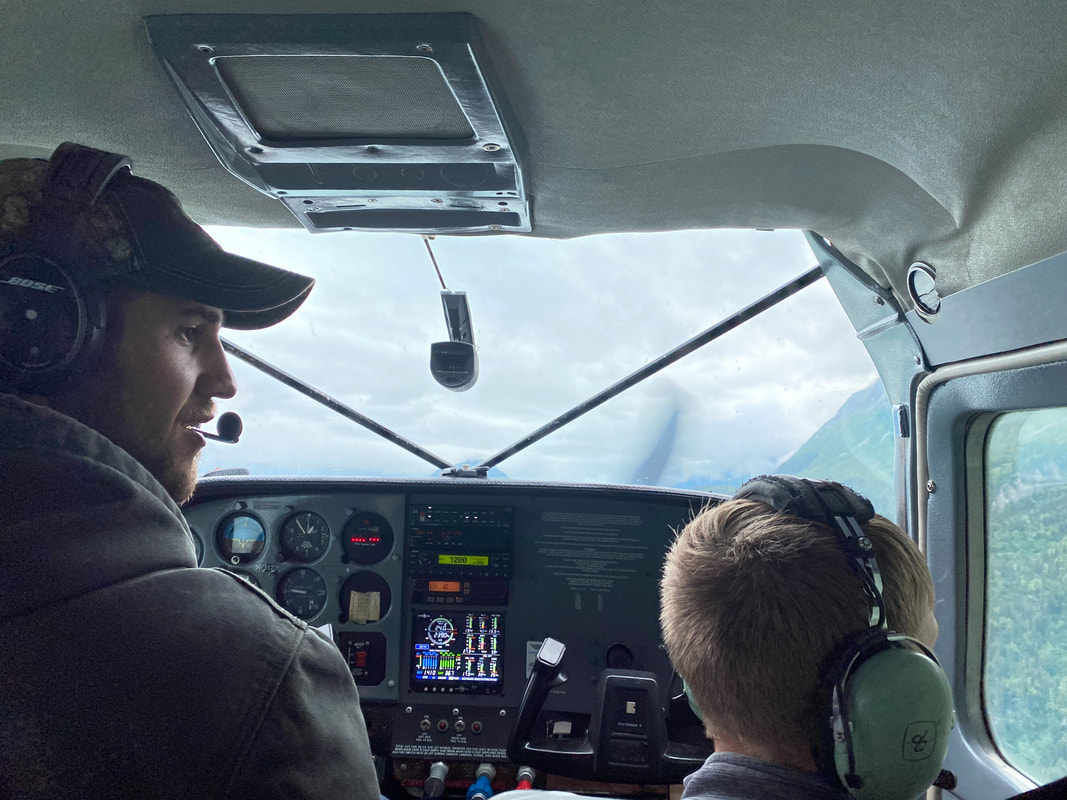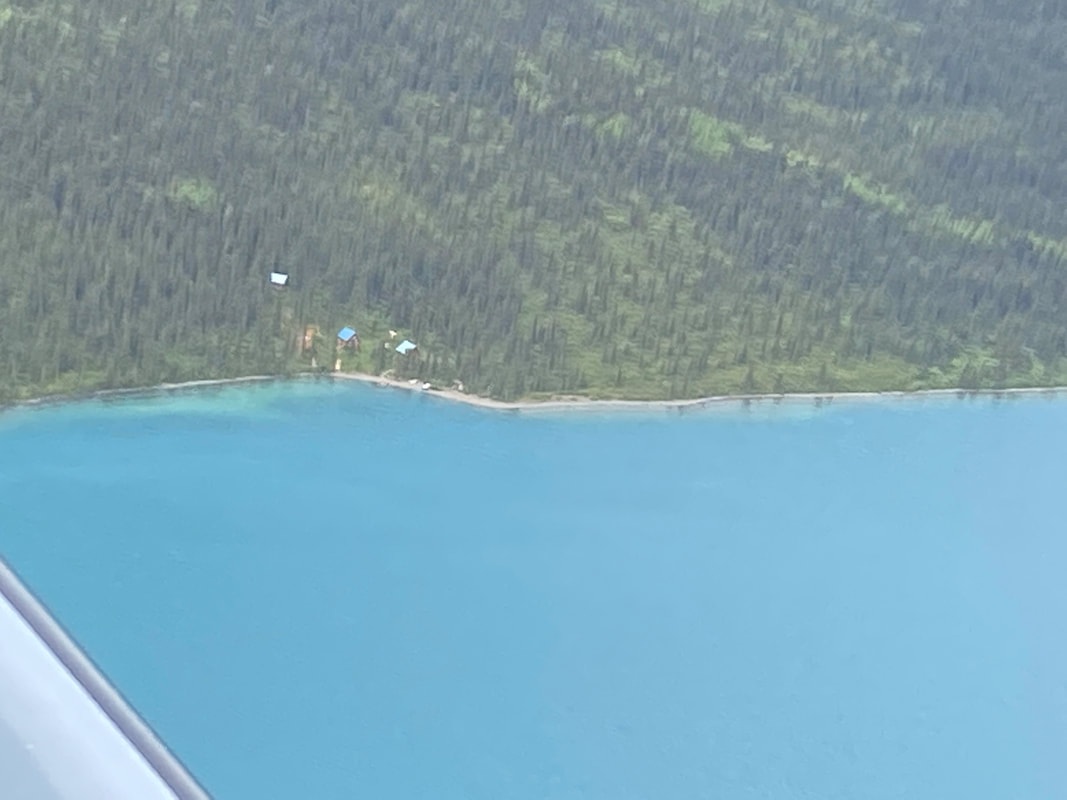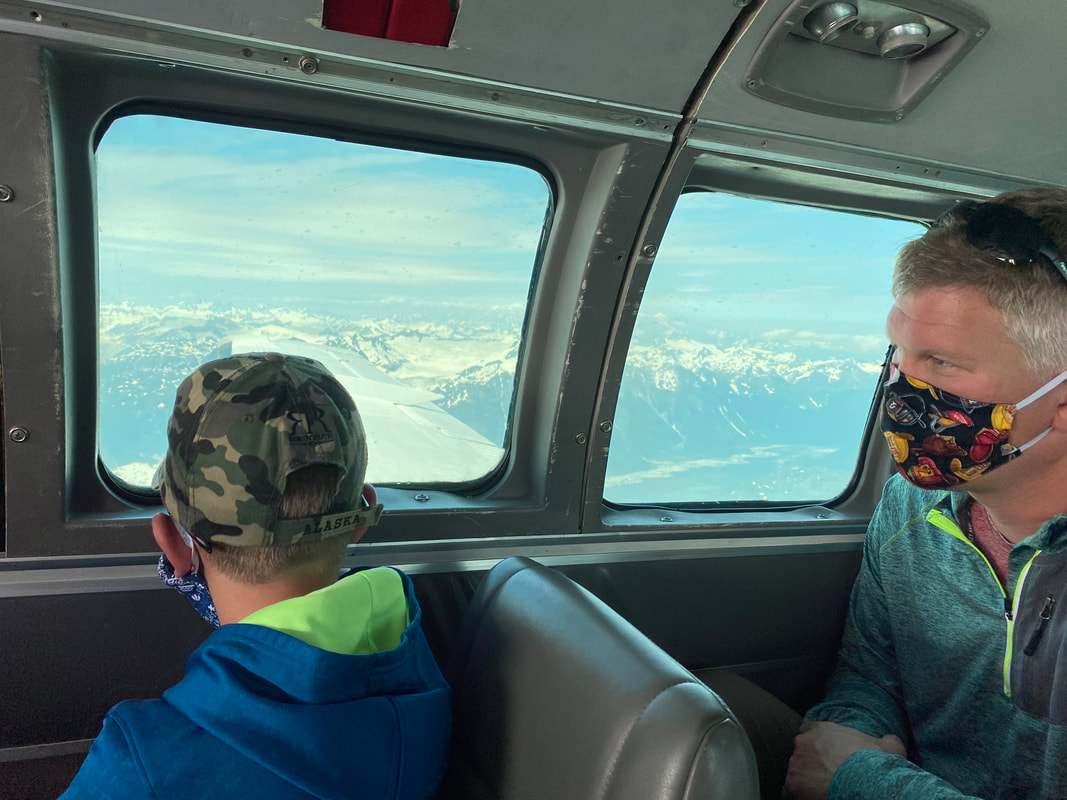Lake Clark National Park: Twin Lakes
is located in southwest Alaska about 100 miles southwest of Anchorage. Established as a national park in 1980, the park has nearly every type of Alaskan biome from temperate rain forest to arctic tundra and is home to a wide variety of Alaskan fauna.
Lake Clark National Park
Key features:
- Transportation to the island must be planned
-Trails are limited or nonexistent
-Brown bears common
- Incredible lake / mountain views
-Trails are not overcrowded yet
- Weather can change rapidly
- Transportation to the island must be planned
-Trails are limited or nonexistent
-Brown bears common
- Incredible lake / mountain views
-Trails are not overcrowded yet
- Weather can change rapidly
Falls Mountain
Falls Mountain
Key Features:
-no real route
-dangerous scree & loose rock
-epic views
-straight up
-worth every step
Key Features:
-no real route
-dangerous scree & loose rock
-epic views
-straight up
-worth every step
Falls Mountain
Falls Mountain offers you as little or much of a hike as you care for. (Read my blog to see our route) Taking off directly behind the Windsong Wilderness Retreat, you follow a winding trail through the pines and vegetation until you meet up and cross the small creek from the actual falls. This creek never meets the lake, but rather is absorbed into the ground on its way downhill. So if you are looking to follow the water to the falls, guess again.
You'll continue to climb through prime bear habitat and scruff, so make sure to make plenty of noise on your way up the mountain. From here you will follow the clues of the broken branches to make sure you are headed the right direction. The park service doesn't maintain this trail, although I have no idea why not since it was one of Dick Proenneke's regular routes. After about 30 minutes of moderate hiking, you will hear the roar of the falls and the tree line opens up for a nice view of the cut out gorge the falls travel through.
From here... the trail gets dicey and unmarked. The basic advice given to us was to hug the gorge, but stay in the vegetation so you have some stability and traction. The front (Twin Lakes facing) side of Falls Mountain is the way we went up, but not the way we came down. There are steep, exposed sections of scree and rock that you will have to carefully navigate to not send rock plummeting into your hiking partner. These sections are very steep, completely unmarked, and sketchy at times. We would take about 10 steps, catch our breath and then plan our next 10 steps. From the vantage point on the way up, you never quite know if you are headed the right direction or traveling the safest path.
Your other option is to hug the gorge and travel on around the mountain and follow the narrow sheep paths up and around the backside of the mountain. We decided to return down from the peak this way as it is a more straight line of sight and more intuitive path. However, the views are of the Emerson Creek valley and not Twin Lakes. It is also a grassy view vs. a rugged rock view. If you have a lot of mountain experience, this scree scrambling might not bother you, but it was well outside of our Midwest hiking expertise.
Once you reach the flat knoll directly above and to the right of the falls, you will walk the ridge line up, and up, and up to the peak. We thought we were peaking out 3 times only to be fooled by false summits. This is a heart pumping uphill slog, but it was no longer dangerous and nail biting. It took us about an hour and a quarter to travel from the knoll to the peak.
Total, this hike took us 6 1/2 hours, moving slow, taking breaks and trying to find our way. If we were to hike it again, I believe we could do it in a comfortable 4 hours.
You'll continue to climb through prime bear habitat and scruff, so make sure to make plenty of noise on your way up the mountain. From here you will follow the clues of the broken branches to make sure you are headed the right direction. The park service doesn't maintain this trail, although I have no idea why not since it was one of Dick Proenneke's regular routes. After about 30 minutes of moderate hiking, you will hear the roar of the falls and the tree line opens up for a nice view of the cut out gorge the falls travel through.
From here... the trail gets dicey and unmarked. The basic advice given to us was to hug the gorge, but stay in the vegetation so you have some stability and traction. The front (Twin Lakes facing) side of Falls Mountain is the way we went up, but not the way we came down. There are steep, exposed sections of scree and rock that you will have to carefully navigate to not send rock plummeting into your hiking partner. These sections are very steep, completely unmarked, and sketchy at times. We would take about 10 steps, catch our breath and then plan our next 10 steps. From the vantage point on the way up, you never quite know if you are headed the right direction or traveling the safest path.
Your other option is to hug the gorge and travel on around the mountain and follow the narrow sheep paths up and around the backside of the mountain. We decided to return down from the peak this way as it is a more straight line of sight and more intuitive path. However, the views are of the Emerson Creek valley and not Twin Lakes. It is also a grassy view vs. a rugged rock view. If you have a lot of mountain experience, this scree scrambling might not bother you, but it was well outside of our Midwest hiking expertise.
Once you reach the flat knoll directly above and to the right of the falls, you will walk the ridge line up, and up, and up to the peak. We thought we were peaking out 3 times only to be fooled by false summits. This is a heart pumping uphill slog, but it was no longer dangerous and nail biting. It took us about an hour and a quarter to travel from the knoll to the peak.
Total, this hike took us 6 1/2 hours, moving slow, taking breaks and trying to find our way. If we were to hike it again, I believe we could do it in a comfortable 4 hours.
|
|
|
Emerson Creek
Emerson Creek
Key Features:
-great all around hike
-creek side to alpine
-close up of the falls
-sweeping vistas of both lakes
Key Features:
-great all around hike
-creek side to alpine
-close up of the falls
-sweeping vistas of both lakes
Emerson Creek
At the mouth of Emerson Creek, park your boat on the rocky shore, tie it down and look to the left of the mouth for a subtle trail entering the low brush. The trail is between the mouth of Emerson Creek and the connector stream (connecting the upper and lower lakes). The first portion of the hike follows the creek bed and is fairly well established. The brush can be high in parts, so if it has just rained, throw on your rain pants or be prepared to pick up a little moisture on your pant leg. The sounds of Emerson Creek rushing to the lake make for a very pleasant atmosphere. This is prime bear habitat, so be sure to call out and make plenty of noise on the entire hike. Toward the end of this first section following the creek, you’ll find a few easy water streams to cross and contend with as some of the creek washes through the trail line. The trail then transitions into soft pine and undercover and the trees get larger as you enter a more forested area. After about 30 minutes of walking, roughly a mile, the trail crosses into the rocky tumbled stones of the creek bed and you will turn toward the mountain. You will actually be looking straight at the high knoll or bench that will be adjacent to the upper falls. You will also notice a high rock wall as the rugged terrain leads to the falls. Still following Emerson Creek, you will observe the gentle creek turn rough and wild. Large boulders and raging torrents indicate you are approaching the lower portion of the falls. There are actually 3 falls in total. The trail snakes in and out of the rough boulders and snuggled pines and the immense sounds of the falls is clear.
At the lower section you can get extremely close and it is the most photogenic portion of the falls. A large drop and swirling pool then power through the boulder field. You can get close to all of this fairly easily. Footing is stable, but takes focus and attention to feel confident. From there the trail takes on the typical Alaskan feel- steep and challenging. It is slow going, but a quick ascent to the second viewing area of Emerson Falls. This falls sits high up in the valley, and while you can’t get very close to it, it makes for a nice picturesque backdrop. The trail is narrow, roots, and rocky and will require clear hand and foot holds, but it doesn’t gruel on for very long, as some trails can.
The final section of the trail is, in my opinion, the most worth it of the whole day. You’ll traverse one more pitch and climb to the bench that overlooks the Emerson Creek Valley, both Twin Lakes, and the Connector Stream. You can even see further on down the mountain range to the Bonanza Hills and Trail Butte in between. Even on a cloudy day the view is absolutely breathtaking. The crisp blue of the lakes in contrast with the browns and greens of the hillsides and the sky above reminds you why you sojourned so far to the Lake Clark wilderness in the first place.
If you still have energy, you can press on to the high country and traverse through low brush blueberries and waist high scrub brush and climb the next tier for an even bigger view of the mountains. This is bear territory at its finest, so scope out your surroundings before committing or you may find yourself coming face to face with a bear family.
Overall, this was a moderate hike of about 3 hours if you take your time to enjoy the views. For little effort, you can get some epic views and iconic waterfalls in the Twin Lakes area.
At the lower section you can get extremely close and it is the most photogenic portion of the falls. A large drop and swirling pool then power through the boulder field. You can get close to all of this fairly easily. Footing is stable, but takes focus and attention to feel confident. From there the trail takes on the typical Alaskan feel- steep and challenging. It is slow going, but a quick ascent to the second viewing area of Emerson Falls. This falls sits high up in the valley, and while you can’t get very close to it, it makes for a nice picturesque backdrop. The trail is narrow, roots, and rocky and will require clear hand and foot holds, but it doesn’t gruel on for very long, as some trails can.
The final section of the trail is, in my opinion, the most worth it of the whole day. You’ll traverse one more pitch and climb to the bench that overlooks the Emerson Creek Valley, both Twin Lakes, and the Connector Stream. You can even see further on down the mountain range to the Bonanza Hills and Trail Butte in between. Even on a cloudy day the view is absolutely breathtaking. The crisp blue of the lakes in contrast with the browns and greens of the hillsides and the sky above reminds you why you sojourned so far to the Lake Clark wilderness in the first place.
If you still have energy, you can press on to the high country and traverse through low brush blueberries and waist high scrub brush and climb the next tier for an even bigger view of the mountains. This is bear territory at its finest, so scope out your surroundings before committing or you may find yourself coming face to face with a bear family.
Overall, this was a moderate hike of about 3 hours if you take your time to enjoy the views. For little effort, you can get some epic views and iconic waterfalls in the Twin Lakes area.
|
|
|
Teetering Rock
Teetering Rock
Key Features:
-easy trail, well marked
-excellent views of lake
-short, quick hike
-chance to see bear & moose
-iconic Proenneke spot
Key Features:
-easy trail, well marked
-excellent views of lake
-short, quick hike
-chance to see bear & moose
-iconic Proenneke spot
Teetering Rock
Of the Twin Lakes area, this trail is as much of a “maintained” trail as you will find. The path is worn, but the brush on the side is not entirely clear, trimmed, or maintained. However, this is as easy a trail as you may find in the area. It is quite intuitive- one way up, look for the boulder, enjoy the scenery, and return. This was our first day hike in the area, and maybe that is why it may always remain my favorite memory. The first time you ascend high enough to overlook the crystal clear, vibrant blue water of Twin Lakes, you’ll never forget it.
The trail starts off behind the famous Proenekke cabin and winds in and out of the lush pine trees. The sounds of Hope Creek overpower everything else and I questioned why you might place your cabin there and miss all the sounds of other wildlife, but as Dick wrote, “there’s no better sleeping pill” than that Hope Creek roar. Hope Creek along the Teetering Rock Trail is mostly a small boulder filled creek. There isn’t a specific spot to sit or enjoy it necessarily, but it is pretty.
There is a decent steepness to the trail and if you are not used to elevation, you can get winded easily carrying your day pack. This trail takes you up out of the tree line and provides you with a solid sweeping view of the Upper Twin Lake. Across the valley that Hope Creek carves out, you can see Cowgirl Benches that Dick loves so much.
Also, while spotting with the scope from the other side of the lake, we noticed a black bear rummaging around this area and were reminded to keep vigilant in this elevation, even though we felt very out in the open.
The trail starts off behind the famous Proenekke cabin and winds in and out of the lush pine trees. The sounds of Hope Creek overpower everything else and I questioned why you might place your cabin there and miss all the sounds of other wildlife, but as Dick wrote, “there’s no better sleeping pill” than that Hope Creek roar. Hope Creek along the Teetering Rock Trail is mostly a small boulder filled creek. There isn’t a specific spot to sit or enjoy it necessarily, but it is pretty.
There is a decent steepness to the trail and if you are not used to elevation, you can get winded easily carrying your day pack. This trail takes you up out of the tree line and provides you with a solid sweeping view of the Upper Twin Lake. Across the valley that Hope Creek carves out, you can see Cowgirl Benches that Dick loves so much.
Also, while spotting with the scope from the other side of the lake, we noticed a black bear rummaging around this area and were reminded to keep vigilant in this elevation, even though we felt very out in the open.
|
|
|
Cowgill Benches to First Canyon
Cowgill Benches
Key Features:
-blueberry picking
-level spots
-short distance to Proenneke site
-views of Hope Creek
-frequent bear & moose viewing
Key Features:
-blueberry picking
-level spots
-short distance to Proenneke site
-views of Hope Creek
-frequent bear & moose viewing
Cowgill Benches
Today we hiked up to the iconic Cowgill Benches. At first, I didn’t quite trust the name, as from afar, there isn’t much that resembles a bench in my mind. However, after winding through the pine trees and gaining a little elevation, the single track worn path finally switched to and fro up the mountainside above Hope Creek. It was when I finally turned back and looked at that beautiful bright blue Twin Lake that the actual “benches” appear. The benches are what some might call tiers or terraces. They aren’t incredibly noticeable on the way up, but from above they have a very clear box like structure and look to simply drop off down to the next level, much like an endless pool would, only this endless pool is lush green vegetation.
From the height of the benches, you can peer deep into the dark grey/brown chasm of the Hope Creek channel and make out the leaning shape of TeeteringRock across to the right. It was in this elevation that we had seen a black bear and her two cubs just a few das before, and today we sighted grizzly tracks dug into the trail beneath our feet.
This day in early July, we were able to find a few early blueberries ripening up. They hid in among the anything, and I would have walked right past them if not for my observant hiking partner. As I picked, I couldn’t help but imagine DIck Proenneke using his homemade scooper picking with the same view and same wind in his hair. The tartness surprised me, but I guess in the bush anything fresh is a treat.
From high on the benches, you can really take in the impressive surroundings. To the left are the drier brown peaks, and straight across the beautiful rugged waterfall of Falls Mountain. As your eye sweeps right, the contrast of dark craggy peaks and snow strewn valleys beacon you to come explore more. On a calm day the mountains mirror themselves and I found myself lost staring between reality and reflection, the lines blurring between the two.
As we hiked higher up to First Canyon, we clung to the mountains edge, winging our way around hidden corners in and out of the high scruff. With the wind in our faces, we startled a moose and watched I bond through raging Hope Creek and up the far side of the canyon with ease. She stopped to scout our whereabouts, and as soon as we moved she spooked and took off toward the lake, clearly deciding she had had enough of us and jogged off out of the canyon.
After losing the trail in the overgrown gulleys, we were unnerved to be caught in this cool valley in the face of a black bear. So we headed back as the skies were turning dark and we didn’t want to get caught on the rough lake. That night spotting animals with the scope, we watched as a black bear walked right through the area eating from the same berry bushes we had.
From the height of the benches, you can peer deep into the dark grey/brown chasm of the Hope Creek channel and make out the leaning shape of TeeteringRock across to the right. It was in this elevation that we had seen a black bear and her two cubs just a few das before, and today we sighted grizzly tracks dug into the trail beneath our feet.
This day in early July, we were able to find a few early blueberries ripening up. They hid in among the anything, and I would have walked right past them if not for my observant hiking partner. As I picked, I couldn’t help but imagine DIck Proenneke using his homemade scooper picking with the same view and same wind in his hair. The tartness surprised me, but I guess in the bush anything fresh is a treat.
From high on the benches, you can really take in the impressive surroundings. To the left are the drier brown peaks, and straight across the beautiful rugged waterfall of Falls Mountain. As your eye sweeps right, the contrast of dark craggy peaks and snow strewn valleys beacon you to come explore more. On a calm day the mountains mirror themselves and I found myself lost staring between reality and reflection, the lines blurring between the two.
As we hiked higher up to First Canyon, we clung to the mountains edge, winging our way around hidden corners in and out of the high scruff. With the wind in our faces, we startled a moose and watched I bond through raging Hope Creek and up the far side of the canyon with ease. She stopped to scout our whereabouts, and as soon as we moved she spooked and took off toward the lake, clearly deciding she had had enough of us and jogged off out of the canyon.
After losing the trail in the overgrown gulleys, we were unnerved to be caught in this cool valley in the face of a black bear. So we headed back as the skies were turning dark and we didn’t want to get caught on the rough lake. That night spotting animals with the scope, we watched as a black bear walked right through the area eating from the same berry bushes we had.
|
|
|
The Proenneke Site
Dick Proenneke's Cabin
Key Features:
-Historic landmark & inspiration to many
-Example of primitive living
-Park ranger docents (except during Covid)
-Nearby camping at Hope Creek
-Epic opportunity to be at Twin Lakes
-Film & book chronicles
Key Features:
-Historic landmark & inspiration to many
-Example of primitive living
-Park ranger docents (except during Covid)
-Nearby camping at Hope Creek
-Epic opportunity to be at Twin Lakes
-Film & book chronicles
Proenneke Site
Most outdoor enthusiasts have come across One Man's Wilderness by Sam Keith, or the PBS specials featuring the footage of Dick Proenneke building his cabin on the remote Twin Lakes in Lake Clark National Park. However, few have the privilege, time, or energy to get to the remote location to walk in his footsteps and see the cabin and trails for themselves. We were blessed to receive a grant to make our dream come true and visit this humble man's sanctuary.
The cabin was closed to visitors due to the Covid pandemic, but we were able to view everything on the outside. Gary Titus, the owner of Windsong Wilderness Retreat said we were his first and only visitors for the summer of 2020. It was the only time Gary had ever seen Twin Lakes this quiet. We truly had One Man's Wilderness experience. Usually 4-5 planes visit a day in the summer, but we had an absolutley quiet week, with the only planes flying in on the 4th of July. It certainly added to the seclusion, isolation, and peace that we had hoped for.
The cabin and area was exactly as we had imagined and hoped. Everything was tidy and well maintained. All of the things we had read about that Dick had handmade were there for us to look at and we could snoop around the cabin, cache, and shed until our hearts were content that we had seen it all. The size and scope of the Twin Lakes area is remarkable. I felt dwarfed by the massive expanse of wilderness around me. It was impossible to take it all in in one view. I could sit and gaze for hours at the sheer size of it all.
One thing many people don't know is that there are actually several cabins located within a VERY short walk of Dick's cabin. He was alone, but certainly not as alone as most people think. Once his journals and videos were public, he got visitors almost weekly, if not daily at times. I have no less respect for him after visiting, but I do understand that it was not as lonesome as you might think. Spike's cabin is merely yards from Dick's.
Visiting the iconic hikes was enlightening too. In the Twin Lakes area, the hikes behind the cabin are the most accessible and the safest. I can see why Dick would have loved to hike up to Teetering Rock or the Cowgill Benches to get a better view or the lake or pick some blueberries. Check out this entire page for a synopsis of all the hikes.
The cabin was closed to visitors due to the Covid pandemic, but we were able to view everything on the outside. Gary Titus, the owner of Windsong Wilderness Retreat said we were his first and only visitors for the summer of 2020. It was the only time Gary had ever seen Twin Lakes this quiet. We truly had One Man's Wilderness experience. Usually 4-5 planes visit a day in the summer, but we had an absolutley quiet week, with the only planes flying in on the 4th of July. It certainly added to the seclusion, isolation, and peace that we had hoped for.
The cabin and area was exactly as we had imagined and hoped. Everything was tidy and well maintained. All of the things we had read about that Dick had handmade were there for us to look at and we could snoop around the cabin, cache, and shed until our hearts were content that we had seen it all. The size and scope of the Twin Lakes area is remarkable. I felt dwarfed by the massive expanse of wilderness around me. It was impossible to take it all in in one view. I could sit and gaze for hours at the sheer size of it all.
One thing many people don't know is that there are actually several cabins located within a VERY short walk of Dick's cabin. He was alone, but certainly not as alone as most people think. Once his journals and videos were public, he got visitors almost weekly, if not daily at times. I have no less respect for him after visiting, but I do understand that it was not as lonesome as you might think. Spike's cabin is merely yards from Dick's.
Visiting the iconic hikes was enlightening too. In the Twin Lakes area, the hikes behind the cabin are the most accessible and the safest. I can see why Dick would have loved to hike up to Teetering Rock or the Cowgill Benches to get a better view or the lake or pick some blueberries. Check out this entire page for a synopsis of all the hikes.
|
|
|
Windsong Wilderness Retreat
Windsong
Key Features:
-Only chance to stay in a cabin on Twin Lakes
-Neat & tidy cabin
-Great fishing
-Opportunity to talk to Gary who has lived here since the 70s
Key Features:
-Only chance to stay in a cabin on Twin Lakes
-Neat & tidy cabin
-Great fishing
-Opportunity to talk to Gary who has lived here since the 70s
Windsong Wilderness Retreat
Of everything we did in the Kenai Penninsula area of Alaska over 18 days, Windsong Wilderness Retreat was by far our best decision. If you are looking for the true Alaskan experience away from the hustle and bustle of society, then this is the real deal. Gary Titus has worked hard to keep his cabin on Twin Lakes a singular experience for his guests, where they can truly connect with the beauty of Twin Lakes and experience it in the way it is intended. It's does not feel like a tourist lodge, but rather a personal visit.
His cabin provides you with the safety and security of a clean and tidy roof over your head, while allowing you to live off grid and work for your comforts a little bit. You'll have the opportunity to scoop and filter water from the lake, cook over a propane stove, and hand wash your dishes like momma used to make you. I found myself so much more mindful of my resources, waste, and habits. It was refreshing to simplify the routine tasks of daily living.
Some may come to Twin Lakes to simply enjoy the beauty with a good percolated cup of coffee, but if you are like us, you come for adventure. Twin Lakes gave us all we could handle and then some. We took daily hikes ranging in difficulty and level of danger, but always beautiful! With access to the boat, we hiked Teetering Rock, Emerson Creek, Falls Mountain, the Cowgill Benches, and the lake shore from the cabin. Each offered us a different perspective of the area and provided as much or little challenge as we wished to take on for the day. It was as easy as the uphill hike to Teetering Rock behind Dick Proenekke's cabin or the full scale summit of the trail-less Falls Mountain peak.
When at the cabin, we had opportunities to fish off the dock, hand feed the jays leftover pancakes off the front porch, or watch the bears and wildlife through the spotting scope. On a rainy day you can pick a book or compilation of local history from Gary's extensive collection in the cabin while you watch the ducks tool around the dock. There was not one day of boredom or lack of things to do. In fact, we got fogged in an extra day, which we considered a gift.
But the best part of a stay at Windsong has to be learning from Gary's impressive life experiences as a "real" Alaskan. Arriving in Alaska after college with only a backpack, Gary has lived the Alaskan dream that so many seek. His vast knowledge of oral histories, locations, and wildlife can't be quantified. Those who are lucky enough to pick his brain for an hour or two will find as much unique Alaska lore as any book or tv show could hope to provide.
It was with great effort and resources that we got to Windsong, but we certainly hope to return again one day.
His cabin provides you with the safety and security of a clean and tidy roof over your head, while allowing you to live off grid and work for your comforts a little bit. You'll have the opportunity to scoop and filter water from the lake, cook over a propane stove, and hand wash your dishes like momma used to make you. I found myself so much more mindful of my resources, waste, and habits. It was refreshing to simplify the routine tasks of daily living.
Some may come to Twin Lakes to simply enjoy the beauty with a good percolated cup of coffee, but if you are like us, you come for adventure. Twin Lakes gave us all we could handle and then some. We took daily hikes ranging in difficulty and level of danger, but always beautiful! With access to the boat, we hiked Teetering Rock, Emerson Creek, Falls Mountain, the Cowgill Benches, and the lake shore from the cabin. Each offered us a different perspective of the area and provided as much or little challenge as we wished to take on for the day. It was as easy as the uphill hike to Teetering Rock behind Dick Proenekke's cabin or the full scale summit of the trail-less Falls Mountain peak.
When at the cabin, we had opportunities to fish off the dock, hand feed the jays leftover pancakes off the front porch, or watch the bears and wildlife through the spotting scope. On a rainy day you can pick a book or compilation of local history from Gary's extensive collection in the cabin while you watch the ducks tool around the dock. There was not one day of boredom or lack of things to do. In fact, we got fogged in an extra day, which we considered a gift.
But the best part of a stay at Windsong has to be learning from Gary's impressive life experiences as a "real" Alaskan. Arriving in Alaska after college with only a backpack, Gary has lived the Alaskan dream that so many seek. His vast knowledge of oral histories, locations, and wildlife can't be quantified. Those who are lucky enough to pick his brain for an hour or two will find as much unique Alaska lore as any book or tv show could hope to provide.
It was with great effort and resources that we got to Windsong, but we certainly hope to return again one day.
|
|
|
Transportation
Transportation
Key Features:
-Few Providers
-High Cost
-4 flights in total
-Weather Dependent
-Amazing Views & scenery
Key Features:
-Few Providers
-High Cost
-4 flights in total
-Weather Dependent
-Amazing Views & scenery
Transportation
Getting to Twin Lakes is a feat in itself! We took a total of 4 flights to get from Indiana to Lake Clark National Park. It is easy to see why it is one of the least visited parks in the country. Our flights from Anchorage to Lake Clark were about $1,000 a piece and took some coordinating of days and times to get where we needed to be on the day we hoped to be there. We hoped to arrive by noon, but it was 4:00 by the time we actually landed on the lake.
The flight through the Lake Clark pass took about 45 minutes and was really unnerving, I mean beautiful! :) You get an up close and personal tour of all the iconic Alaskan landscapes, from the Knik Arm of Anchorage to the flats and marshes, then through the snow capped mountains and glaciers. Once you emerge on the other side of the pass, you are flying over the expansive Lake Clark area with waterfalls cascading into the lake from the snow melt. On the way we flew in a 10-12 seater that was fairly smooth, but on the return, we were in a 4 seat beater that I will forever call the vomit comet because I lost my cookies in some turbulence. However, it added to the adventure! The weather in Alaska is frequently rainy or foggy with low cloud cover, so you just have to be patient. We actually were fogged in for an extra 24 hours (which was rare for July). So plan accordingly with your next set of travel plans. We were starting to sweat missing our flights home, but we made it.
Keep in mind that in Alaska everything is low key and on the schedule of the locals. If they need to load your plane with more supplies for the locals, you may be waiting an extra few hours.
The flight through the Lake Clark pass took about 45 minutes and was really unnerving, I mean beautiful! :) You get an up close and personal tour of all the iconic Alaskan landscapes, from the Knik Arm of Anchorage to the flats and marshes, then through the snow capped mountains and glaciers. Once you emerge on the other side of the pass, you are flying over the expansive Lake Clark area with waterfalls cascading into the lake from the snow melt. On the way we flew in a 10-12 seater that was fairly smooth, but on the return, we were in a 4 seat beater that I will forever call the vomit comet because I lost my cookies in some turbulence. However, it added to the adventure! The weather in Alaska is frequently rainy or foggy with low cloud cover, so you just have to be patient. We actually were fogged in for an extra 24 hours (which was rare for July). So plan accordingly with your next set of travel plans. We were starting to sweat missing our flights home, but we made it.
Keep in mind that in Alaska everything is low key and on the schedule of the locals. If they need to load your plane with more supplies for the locals, you may be waiting an extra few hours.
|
|
|
